N° 1
N° 3
Colours
Caffè nero bollente
50 sfumature di vele
Rosso Sommaco
Rilke, vertigine azzurra
Mille gialli del Collio
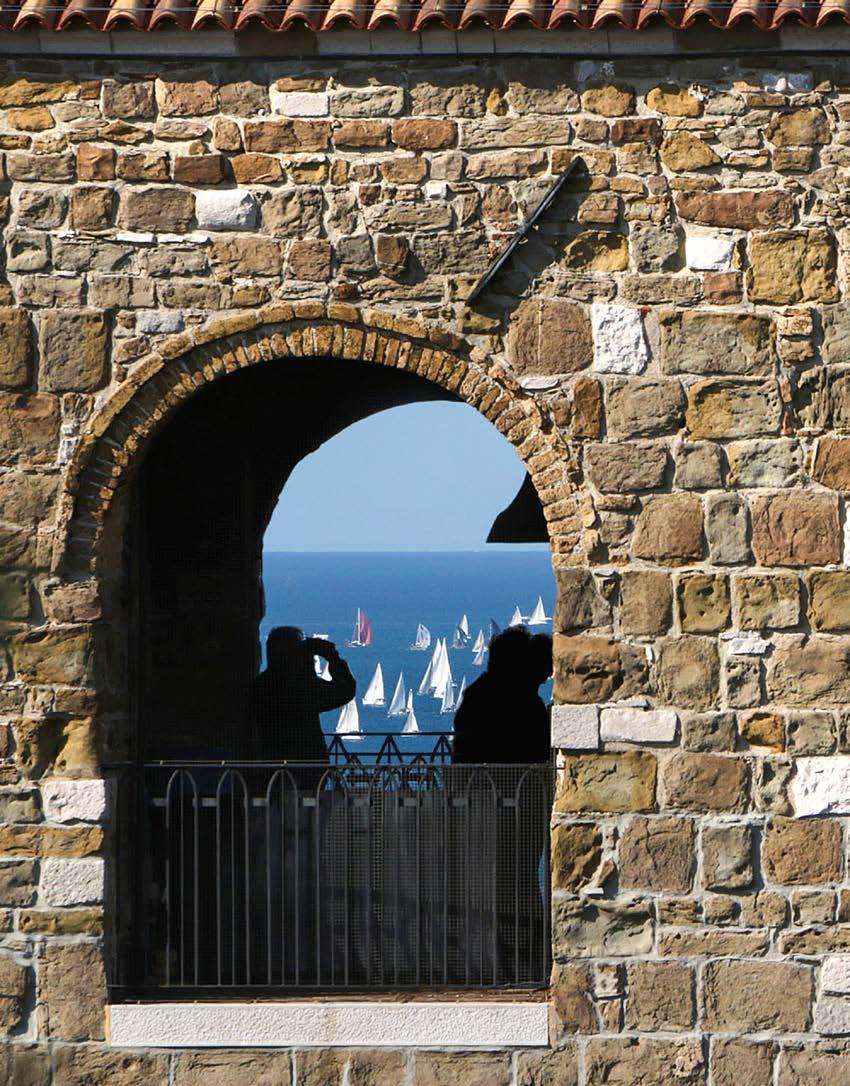
TRIESTE LIFESTYLE
2018
SEPTEMBER
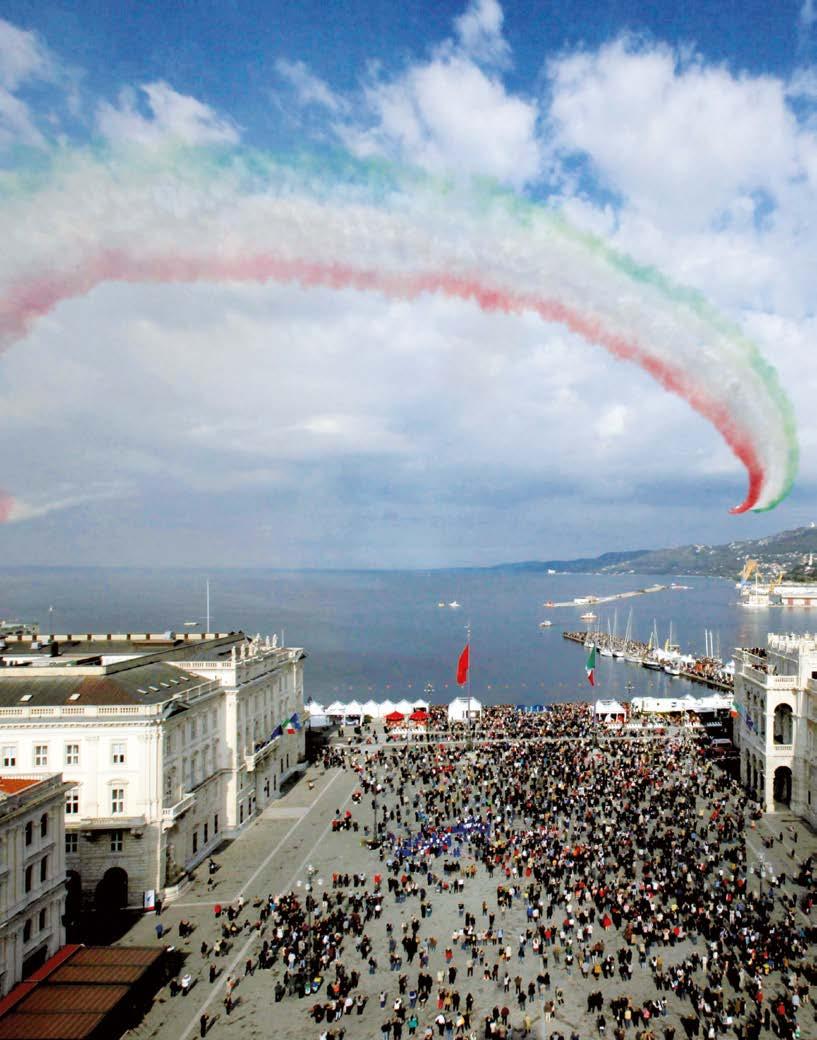




comune di trieste Comune di Trieste @ComunediTrieste comuneditrieste
October 14, 2018
Frecce Tricolori in the sky, Barcolana on the sea Trieste is waiting for you.
Una città e i suoi colori. È possibile raccontare le atmosfere, le suggestioni, le emozioni di una città attraverso i suoi colori? Perchè no, perchè non farlo a Trieste. A cominciare dal colore del caffè: che sia “nero bollente” o “marrone tonaca di monaco”, è fuor di dubbio che il caffè s’intreccia con la città, la sua vita e la sua storia, come spiega l’uomo simbolo del caffè triestino nel mondo, Andrea Illy; o come testimonia una delle manifestazioni più importanti, del settore TriestEspresso Expo. Ci sono poi i mille colori delle vele della Barcolana, la regata più affollata del mondo; o il rosso del sommaco che in autunno infiamma il Carso, dai costoni a strapiombo sull’azzurro del mare fino ai primi gialli, ai verdi, agli arancioni delle vigne del Collio.
—
A city and its colours. Can you describe the atmospheres, the charm, the feeling of a city through its colours? Why not? Why not do it for Trieste? Let’s start with the colour of coffee: being it either “boiling black” or “monk’s tunic brown “, undoubtedly coffee intertwines with the city, its life and its history, as explains Andrea Illy, who represents Triestine coffee worldwide; or as reflected in TriestEspresso Expo, one of the most outstanding events in that sector. Then there are the thousand colours of the Barcolana sails, the most crowded regatta in the world; or the red sumach leaves which inflame the Karst during the autumn, on the rocky cliffs that fall sheer into the blue sea, up to the yellow, green and orange leaves of the Collio vineyards.
Alfonso Di Leva
Ies Magazine Trieste Lifestyle
N° 3 – September 2018
direttore responsabile
Alfonso Di Leva
supervisione editoriale
Giovanni Marzini
hanno collaborato
Ludovico Armenio, Matteo
Contessa, Paola De Cassan, Isabella Franco, Walter Filiputti, Nicolò Giraldi, Lilli Goriup, Francesca Pitacco, Ilaria Romanzin
traduzioni
Rita Pecorari Novak, Eugenia
Dal Fovo, Rebecca Blakey
progetto grafico
Matteo Bartoli – Basiq
progetto editoriale
Prandi Comunicazione & Marketing segreteria di redazione
Fabiana Parenzan redazione@prandicom.it
foto di copertina
Andrea Lasorte
fotografie
Anja Čop, Massimo Crivellari, Nika Furlani, Massimo Goina, Andrea Lasorte, Bianca Navarra, Roberto Pastrovicchio, Luigi Vitale, Archivio Promoturismo FVG, Comune di Trieste – Fototeca dei Civici Musei di Storia ed Arte, Archivio Adobe Stock stampa Riccigraf – Trieste
CITTÀ DA SCOPRIRE DISCOVER THE CITY Trieste e il caffè – intervista 2 ad Andrea Illy di Alfonso Di Leva Atmosfere – I caffè di Trieste 8 Paola De Cassan Ritorno al futuro 12 TriestEspresso Expo Dottor Caffè 18 di Giovanni Marzini Chicche e chicchi al Museo 21 di Gianni Pistrini Barcolana 50 25 L’uomo e il mare – intervista a Mauro Pelaschier di Francesca Pitacco PORTFOLIO Quando le vele 28 colorano Trieste foto di Andrea Lasorte CITTÀ DA VIVERE LIVE THE CITY Arte artigianato e design 40 di Lilli Goriup 2nd Home – Il fascino della 44 seconda casa a Trieste Il Sommaco 48 e la leggenda di Bora di Ilaria Romanzin Il Sentiero Rilke 52 di Isabella Franco CITTÀ DA GUSTARE TASTE THE CITY Fave triestine 58 di Alice Fabi CITTÀ DA VIVERE LIVE THE CITY Memoria – Un percorso 60 di Pace nella città dei sette cimiteri di Nicolò Giraldi San Giusto 62 fra fede e leggenda Fuori Porta 64 Collio – Benedetto da Dio e dagli uomini di Walter Filiputti AGENDA In mostra 68 Antiqua di Matteo Contessa In città 74 Museo Osiride Brovedani In relax 76 Exentia Eventi 78 Post-it 80 HopTour
N° 3 Autorizzazione
TRIESTE LIFESTYLE IES N°2 — June 2018 Sommario
del Tribunale di Trieste del 16 marzo 2018, numero periodico 9/2018 V.G. 847/2018.
TRIESTE E IL CAFFÈ
Trieste e il caffè: i fili della storia, della cultura, dell’economia, dei gesti quotidiani di Trieste e dei triestini s’intrecciano da secoli con quelli della bevanda più superflua, indispensabile, suggestiva e affascinante del mondo. Per Andrea Illy, nella storia esiste un momento emblematico nel quale il legame fra Trieste e il caffè si annoda in maniera tale da poter arrivare a definire Trieste, se non capitale, sicuramente città del caffè?
Alfonso Di Leva
“Il ruolo centrale assunto nei secoli da Trieste rispetto al caffè nasce nel Settecento quando, grazie allo status di Porto Franco istituito dagli Asburgo, la città diventa lo scalo più importante d’Europa. L’abilità di Trieste è stata quella di avere saputo legare la propria crescita al caffè, ricreando negli anni l’intera filiera, dalle botteghe alla Borsa del caffè inaugurata nei primi anni del Novecento, dalle ditte di importazione alle assicurazioni, dalle torrefazioni ai caffè storici tipici della Mitteleuropea e frequentati tutt’oggi da scrittori e artisti, dalla camera di commercio ai laboratori
chimici. Se il Porto Franco ha assicurato un forte impulso al commercio del caffè, è lo sviluppo economico e culturale avvenuto fra l’Ottocento e il Novecento che ha potenziato la tradizione fondata sull’esperienza, l’imprenditorialità e la ricerca, collegando la città al caffè in modo indissolubile. Trieste è l’unica città in cui opera un comparto altamente specializzato per ogni aspetto della filiera del caffè, che vanta eccellenze conosciute in tutto il mondo: il sequenziamento del genoma del caffè Arabica, un unicum nel panorama della ricerca mondiale, è stato coordinato da uno spin-off dell’Università di Trieste e ha visto la collaborazione di illy. Nei secoli è cresciuto un tessuto economico e un indotto importante legato al caffè. Qui si è anche sviluppata un’intensa attività di ricerca –Esof 2020 ci ricorda che siamo anche la città della scienza– che ha contribuito alla valorizzazione del caffè di qualità e accresciuto la consapevolezza della sua importanza anche verso i consumatori.”
Trieste e i triestini cosa hanno dato e cosa danno al mondo del caffè?
“A Trieste il consumo di caffè è più alto rispetto alla media nazionale, a
di /by
—
2 TRIESTE LIFESTYLE IES N°3 — September 2018 Città da scoprire
Andrea Illy: l’intervista
Interview with Andrea Illy
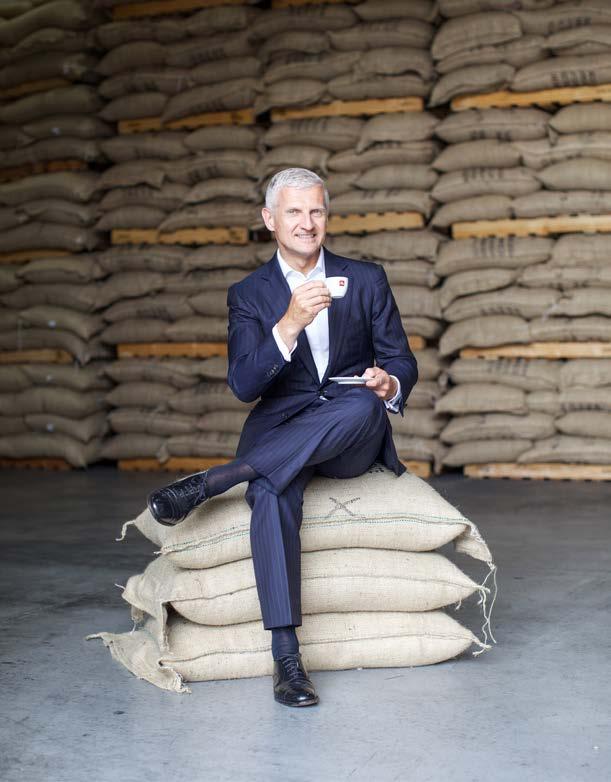
Andrea Illy 3 TRIESTE LIFESTYLE IES N°3 — September 2018 Discover the city
testimonianza della vera e propria passione del triestino per questa bevanda. I diversi modi di bere il caffè –capo in B, nero, caffelatte...– rappresentano forse l’espressione più popolare di una città cresciuta insieme al caffè, tanto da coniare questa caratteristica terminologia. Dal 2000 Trieste è anche la sede del quartier generale dell’Università del Caffè – che conta 25 sedi nel mondo e che negli anni ha formato oltre 200mila persone – il cui obiettivo è quello di diffondere la cultura del caffè e di formare i professionisti dell’ospitalità e i coltivatori attraverso corsi che approfondiscono temi legati all’intera filiera, dalla pianta al servizio al tavolo.”
illycaffè non è solo un’importante realtà economica della città: quanto e come ha contribuito a far nascere e rafforzare l’immagine di Trieste come città del caffè in Italia e nel mondo?
“Mio nonno scelse Trieste per avviare un’attività imprenditoriale fondata su un’idea semplice che ancora oggi è il fulcro della nostra strategia: offrire il migliore caffè al mondo. Oggi siamo un’azienda globale presente in oltre 140 Paesi con un marchio che rappresenta Trieste e l’eccellenza del made in Italy. Expo Milano 2015 è stato, inoltre, un’importante occasione di visibilità per la città che, attraverso la mostra “Il gusto di una città” realizzata al Salone degli Incanti come prolungamento geografico e tematico del Cluster del caffè che abbiamo curato a Milano, ha raccontato la storia, l’economia, la tradizione, il tessuto imprenditoriale e il ruolo di Trieste come capitale del caffè.”
Quali sono i tre posti che suggerirebbe a un turista per cominciare a comprendere il rapporto fra Trieste e il caffè?

Suggerirei di conoscere la città attraverso un tour dei caffè, passeggiando per le vie di Trieste e fermandosi al Tommaseo [1], il più antico caffè di Trieste che ha mantenuto negli anni la tipica ambientazione dei locali viennesi. Proseguirei verso la splendida Piazza Unità d’Italia [2], sostando all’Harry’s Bistro [3], magari degustando le specialità dello chef stellato Matteo Metullio.”
Per Andrea Illy, a prescindere dal caffè, quali sono i tre luoghi dell’anima che un turista non può proprio perdere per scoprire e vivere lo spirito di Trieste e dei triestini?
“Come scriveva James Joyce “la mia anima è a Trieste”. È un’anima che si può descrivere solo dopo avere conosciuto il mare, magari in occasione della Barcolana, la regata più grande al mondo, o semplicemente osservandolo dal Molo Audace [4] dove lo sguardo può arrivare a toccare le montagne. È anche un’anima fatta del paesaggio del Carso, aspro e accogliente, che offre il meglio di sé in autunno quando il Sommaco lo tinge di rosso. Ed è, infine, un’anima multiculturale che rappresenta il punto di incontro della cultura latina, slava e tedesca.
A Trieste il consumo di caffè è più alto rispetto alla media nazionale, a testimonianza della vera e propria passione del triestino per questa bevanda
Yearly coffee consumption in Trieste is higher than the national average, as further proof of the city’s passionate love for this beverage
—
4 TRIESTE LIFESTYLE IES N°3 — September 2018 Città da scoprire
ENGLISH TEXT
Trieste and coffee: for centuries now the intricate crewel work forming the city’s history, culture, and economic life, the delicate embroidery of Triestini’s everyday gestures, has been intertwined with the fascinating thread of coffee – perhaps the most unnecessary, yet vital and evocative brew in the world. In the words of Andrea Illy, what was the point in history, in which the bond between Trieste and coffee was forged, so that the name of the city became irrevocably linked to this drink?
“The central role of Trieste in relation to coffee began in the Eighteenth century, when the city was proclaimed free port by the Habsburg Emperor, thus becoming Europe’s most important sea hub. By cleverly linking its economic development to coffee trade, Trieste was able to promote the gradual involvement of local businesses into each stage of coffee’s supply chain: from the first small shops to the Coffee Stock Market – inaugurated in the early Twentieth century; from import companies to the insurance business; from the city’s Stock Exchange to its chemical laboratories; from coffee roasting companies to the city’s typically Mitteleuropean historical cafes – favourite gathering points of writers and artists to this day. In addition to coffee trade, which gained new momentum thanks to the city’s freeport status, the bond between coffee and Trieste greatly benefitted from the time of economic and cultural development that took place between Nineteenth and Twentieth century, further corroborating the city’s well-established tradition with renewed experience, research, and entrepreneurship. Only in Trieste each stage in the coffee chain corresponds to
a dedicated, highly specialised business division, whose excellence is renowned worldwide: witness, for instance, the sequencing process of Arabica coffee genome, a unique result for research at large, a goal achieved thanks to a spinoff group of experts of the University of Trieste in collaboration with illycoffee. An entire business sector has been developed around coffee over the centuries, amounting to a significant share of turnover. At the same time, the local intense research effort greatly contributes to a constant improvement of coffee quality standards – after all, Trieste is also a city of science, as witnessed by ESOF 2020–as well as the awareness raising of the industry’s end customers.
Trieste and its citizens, how have they contributed, and are still contributing today, to the world of coffee?
“Yearly coffee consumption in Trieste is higher than the national average, as further proof of the city’s passionate love for this beverage. Triestini have invented countless different ways of ordering coffee, coining a whole new set of expressions – such as capo in B [a small macchiato coffee served in a
3 5 5 TRIESTE LIFESTYLE IES N°3 — September 2018 Discover rhe city RivadelMandracchio
PiazzadellaBorsa viaSanNicolò RivaTreNovembre 1
4 Molo Audace
3 2
Harry’s Bistro
Caffè Tommaseo
Piazza Unità
glass], nero [lit. black, indicating a cup of plain espresso coffee], caffelatte [a standard-size cappuccino]… In 2000 Trieste University of Coffee was inaugurated, an institution where more than 200,000 pupils have been trained over the years, and that has established 25 branch offices in various parts of the world. The University’s goal is to disseminate the culture of coffee, while training catering professionals and coffee growers through tailored courses, designed to inform students on each aspect of production and supply chain, from seed to coffee cup.”
illycaffè is not only one of Trieste’s main businesses, but also one of Trieste’s ambassadors in Italy and the world: how and to what extent has the company contributed to the promotion and dissemination of Trieste’s prestigious title of “city of coffee”?
“My grandfather chose Trieste to start his business, which was based on a very simple idea, that is also the core of our company’s strategy to this day: offering the best coffee in the whole world. Today we are a global company, whose trademark represents Italian excellence in over 140 countries.”
Expo Milano 2015 was an important launching pad to promote Trieste’s visibility: our Expo Coffee Cluster in Milan was further developed into the exhibition “The taste of a city” in Trieste’s Salone degli Incanti, to tell the city’s history, economic success, and tradition, by focussing on the local business fabric and Trieste’s role as capital of coffee.”
If you had to choose, what three places in Trieste would you recommend to tourists who wish to experience the bond between the city and coffee?
“I would probably suggest a tour of Trieste’s cafes, which would take visitors on a stroll through the centre, with an obligatory stop at Tommaseo [1], Trieste’s oldest cafe where patrons can
still experience the traditional atmosphere of Vienna coffee shops. Upon reaching splendid Piazza Unità d’Italia [2], visitors could stop at Harry’s Bistro [3], to taste one of young gourmet chef Matteo Metullio’s specialties.”
Coffee aside, what are Andrea Illy’s tips for tourists who wish to see Trieste’s places of the soul, in order to learn and experience the true spirit of Trieste and its Triestini?


“As James Joyce wrote, “my soul is in Trieste”. And the soul of the city can only be appreciated after experiencing its sea, possibly during the Barcolana, the world’s greatest regatta – but also simply standing on the edge of Molo Audace [4], letting your gaze stretch on the gulf, all the way to the mountains on the other side. Trieste’s soul is harsh, yet welcoming, like the Karst Plateau in autumn months, when the Sumach spreads its red cloak over the rocky surface. And it is also a multi-cultural soul, because the city is and has always been the place where Latin, Slavic, and German cultures meet.”
Trieste’s soul is harsh, yet welcoming, like the Karst Plateau in autumn months, when the Sumach spreads its red cloak over the rocky surface
Lo spirito di Trieste somiglia al paesaggio del Carso, aspro e accogliente, che offre il meglio di sé in autunno quando il Sommaco lo tinge di rosso
—
6 TRIESTE LIFESTYLE IES N°3 — September 2018 Città da scoprire
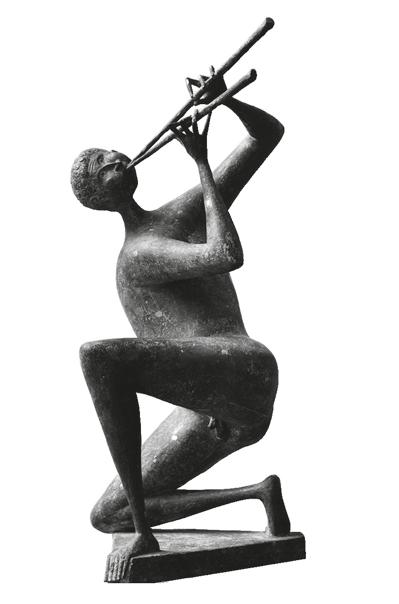

ATMOSFERE
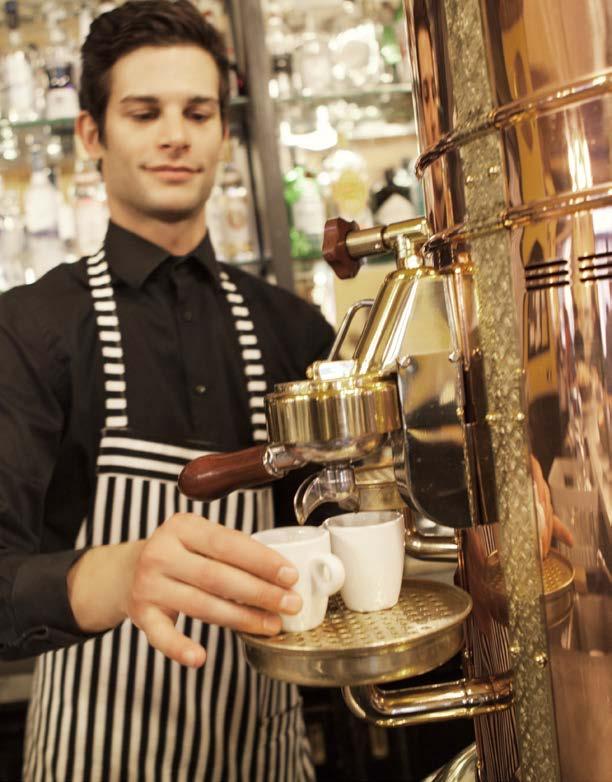
8 TRIESTE LIFESTYLE IES N°3 — September 2018 Città da scoprire
I caffè di Trieste, luoghi dell’anima
Trieste’s cafes, places of the soul
ATrieste l’arte di frequentare i caffè è senza età: ci sono giovani e ragazzi intenti a studiare, adulti che si cimentano con l’arte degli scacchi, anziani che conversano o leggono il giornale e può pure capitare di vedere qualche avventore assaporare una tazzina di caffè.
Perché a Trieste i caffè sono più che semplici locali dove ristorarsi o dove riscaldarsi dalle gelide sferzate del vento di bora in inverno: sono luoghi dell’anima che ti accolgono e ti fanno ricordare la storia del tempo che fu.
Caffè dove “ripete l’ubriaco il suo delirio; ed io ci scrivo i mie più allegri canti. Caffè di ladri, di baldracche covo...”, come scrive Umberto Saba descrivendo il “Caffè Tergeste”, un caffè che si trovava in piazzetta San Giacomo, diventata via Riborgo, attuale via Teatro Romano. Era un caffè dove si incontrava tutta l’umanità, con la sua fragilità, le sue paure, i suoi sogni.
Caffè come luoghi di incontro di letterati e scrittori: chissà quanti hanno immaginato di sedersi al tavolo a fianco di Italo Svevo e James Joyce e dare voce al proprio flusso di pensieri... E non era per nulla difficile, frequentando i caffè

storici di Trieste, incontrare lo scrittore triestino Claudio Magris, magari intento a scrivere uno dei suoi ultimi romanzi tra le decorazioni di Vito Timmel, specchi e stucchi, foglie e bacche di caffè, all’Antico Caffè San Marco [1]. “Il caffè è l’unico luogo in cui si può veramente scrivere: si è soli, con carta e penna e tutt’al più i due o tre libri di cui si ha bisogno in quel momento” (Claudio Magris).
Caffè luoghi di scambi e di trattative: frequentati dalla borghesia, dai commercianti e da donne sole. Perché a Trieste l’emancipazione femminile ha radici lontane. Dalla tradizione austroungarica alla necessità di dover gestire personalmente gli affari mentre il marito navigava. E oggi, al Caffè degli Specchi [2], il salotto buono della città, le donne amano ancora prendersi una pausa dalla famiglia e si “riuniscono qui regolarmente a lamentarsi del fatto che nulla è più come prima”, come scrive lo scrittore tedesco Veit Heinichen che ha fatto di Trieste la sua casa.
Caffè luoghi di incontro di irredentisti che auspicavano e cospiravano per l’annessione di Trieste all’Italia: nel 1914 il Caffè San Marco venne completamente distrutto per questo motivo.
L’arte di frequentare i caffè è senza età: ci sono giovani e ragazzi intenti a studiare, adulti che si cimentano con l’arte degli scacchi, anziani che conversano o leggono il giornale
Each moment spent in a cafe is the performance of an ageless art: there are students bent on their books, adults playing chess, elderly chatting or reading their newspaper
—
di /by
Paola De Cassan
–
9 TRIESTE LIFESTYLE IES N°3 — September 2018 Discover rhe city
Caffè come tradizioni lontane: arrivarono cent’anni dopo il Caffè Florian a Venezia e crebbero velocemente. Nel 1830 erano già un centinaio! Molti di questi non ci sono più, ma in alcuni luoghi si continua a respirare l’atmosfera di un tempo. Come al Caffè Tommaseo [3], il più antico esistente in città, che risale al 1825 e che fu il primo a portare a Trieste il gelato e l’illuminazione a gas. E poi c’è l’Antico Caffè Torinese [4] con le sue boiserie che ricordano l’interno di un transatlantico della belle époque, il Caffè Stella Polare [5] nel cuore del borgo Teresiano dove sorseggiare uno spritz avvolti dai colori accesi del tramonto che si specchia sul vicino canale. O il Caffè Pirona [6], ora chiuso, e luogo tanto amato e frequentato da Joyce e che il FAI, Fondo Ambiente Italiano, sta cercando di salvare con la campagna “I Luoghi del Cuore”. Caffè, infine, come bevanda che i triestini amano talmente tanto da consumarne 10kg di media annuale pro capite, quasi il doppio della media nazionale! Quindi scusateci se di tanto in tanto appare la nostra “scontrosa grazia”.
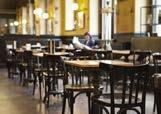
Cafes where “the drunkard rehearses his delirium; and I write my most joyful chants. Cafe of thieves and den of whores” [unofficial translation], in the words of Umberto Saba’s Canzoniere [Songbook], as the poet describes “Tergeste Cafe”, which used to be located in former Via Riborgo – originally Piazzetta San Giacomo, and now Via Teatro Romano. The entire spectrum of humanity used to gather here, with their weaknesses, fears, and dreams.
ENGLISH TEXT

In Trieste, each moment spent in a cafe is the performance of an ageless art: there are students bent on their books, adults playing chess, elderly chatting or reading their newspaper, and sometimes you may even spot a customer actually having a cup of coffee. Trieste’s cafes are not mere indoor spaces where one gets food or a shelter from the Bora wind in winter time: they are places of the soul, where patrons are greeted with open arms and told the stories of bygone days.
Cafes where scholars and writers used to meet: who knows how many crossed these thresholds, fantasising about sitting next to Italo Svevo and James Joyce, and allowing their streams of consciousness to flow… Trieste’s own writer Claudio Magris was no stranger to the city’s historical cafes, where he was known to linger while writing his novels, surrounded by Vito Timmel’s decorations, as well the mirrors, stuccos, leaves, and coffee beans adorning the walls of the Antico Caffè San Marco [1]. “Cafes are the only place where one can truly write: one is alone with paper and pen, a couple of books for immediate use, at most” [Claudio Magris, unofficial translation].
I caffè sono più che semplici locali dove ristorarsi o riscaldarsi: sono luoghi dell’anima che ti accolgono e ti fanno ricordare la storia del tempo che fu —
Trieste’s cafes are not mere indoor spaces where one gets food or a shelter: they are places of the soul, where patrons are greeted with open arms and told the stories of bygone days
10 TRIESTE LIFESTYLE IES N°3 — September 2018 Città da scoprire
L’Antico Caffè San Marco
Piazza Goldoni
still a few where the original atmosphere has survived. Witness Caffè Tommaseo [3], the oldest establishment of its kind, founded in 1825 as the first cafe in Trieste offering ice cream and gas lamps. And then there are the Antico Caffè Torinese [4] with its wainscoting resembling a belle époque ocean liner; the Caffè Stella Polare [5] in the heart of Borgo Teresiano (Old Town) where you can sip a Spritz [Winebased cocktail commonly served as an aperitif in Northeast Italy], surrounded by the fiery colours of the sunset reflecting in the Canal; the Caffè Pirona [6], recently closed, but formerly one of Joyce’s favourite places, and currently object of a national campaign named “I Luoghi del Cuore” [Places of the Heart] launched by the FAI Fondo Ambiente Italiano [National Trust of Italy].
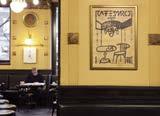
Cafes where you can taste the finest coffee, a brew so popular here that yearly coffee consumption per capita amounts to 10 kg – more than twice the national average! So you will forgive us if, at times, we show our “rude charm”.
11 TRIESTE LIFESTYLE IES N°3 — September 2018 Discover rhe city
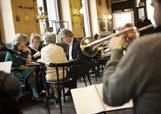 Caffè Stella Polare
Caffè Pirona
Antico Caffè San Marco
CaffèTommaseo
Antico Caffè Torinese
Caffè degli Specchi
Caffè Stella Polare
Caffè Pirona
Antico Caffè San Marco
CaffèTommaseo
Antico Caffè Torinese
Caffè degli Specchi
San Giusto PiazzaUnità
MoloAudace
Parco della Rimembranza
Teatro Romano
Piazza Goldoni CorsoItalia CanalediPonterosso 1 4
Via Carducci 3 5 6
2
Cafes where trade negotiations and exchanges take place, where middle-class citizens, traders, and even single ladies could sit side by side. Women’s emancipation has indeed a far-reaching history in Trieste, dating back to the Austro-Hungarian tradition and continuing into the golden era of maritime trade, when men sailed the seas and women stayed behind to take care of the family’s business. Today, the Caffè degli Specchi [2], the city’s parlor, is still women’s favourite gathering place, where they can take a break from daily routines, “spending their time complaining that nothing today is as it used to be” [unofficial translation], in the words of German writer Veit Heinichen, who chose Trieste as his elective home.
Cafes where Irredentists used to meet, sharing their hopes and schemes to annex Trieste to Italy – which is why Caffè San Marco was razed to the ground in 1914.
Cafes where long-lost traditions are preserved. Trieste’s cafes appeared one hundred years after Caffè Florian in Venice, but their number grew exponentially. In 1830 there were more than a hundred! Many are no longer, but there are
Profumi, colori e mercati del caffè nel
Porto Vecchio —
Scents, colours, and coffee stands in Porto Vecchio
RITORNO AL FUTURO
Isuoi vestiti sono impregnati di odore di caffè crudo, persino i suoi capelli odorano di caffè. […] vi è come di casa, s’aggira fra le pile dei sacchi gonfi e puliti, tra i “monti” delle varie qualità di caffè; ne conosce anche i nomi: Rio, Santos, Portorico, Guatemala, Mocca, Perla…” Sono le suggestioni con le quali, nel libro Ritorneranno , Giani Stuparich porta i

suoi lettori nel Porto Vecchio di Trieste, facendo quasi sentire l’odore di caffè che si sprigionava dai sacchi di juta stivati nei magazzini. Tra le tante merci che arrivavano a Trieste, il grande porto dell’Impero Austro-Ungarico, non poteva mancare la bevanda del “diavolo”, come venne inizialmente chiamato il caffè a causa di quella pericolosa eccitazione che provocava.
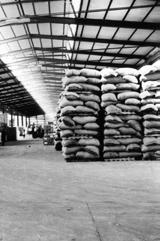
12 TRIESTE LIFESTYLE IES N°3 — September 2018 Città da scoprire
E, a distanza di secoli, è sempre qui, nel Porto Vecchio, che si svolge ogni due anni TriestEspresso Expo, la più importante fiera internazionale professionale dedicata al settore del caffè, quasi a indicare una delle possibilità di sviluppo di un’area con uno straordinario patrimonio architettonico, storico e artistico, finalmente restituita alla città. O ad anticipare un futuro nel quale Porto Vecchio, al di là dei traffici, torna alla sua centralità nella vita e nello sviluppo della città, con una riqualificazione che comprenda attività espositive e congressuali, di cui TriesteEspresso Expo, prima, ed Esof 2020 con Trieste Capitale Europea della Scienza, poi, sono già due tappe certe e consolidate. TriestEspresso Expo, e quindi Trieste, infatti, in questi anni sono diventati un preciso punto di riferimento per tutte le aziende che operano nel mondo del caffè che, proprio in Porto Vecchio, come in passato, s’incontrano per i loro commerci e i loro affari, per proporre tutte le novità del settore, dai
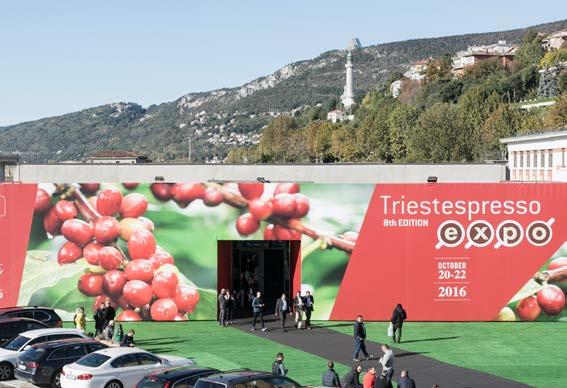
macchinari all’oggettistica, ai servizi. Nell’ultima edizione, nel 2016, la manifestazione –organizzata da Aries. Camera di commercio di Trieste in collaborazione con l’Associazione Caffè Trieste– ha portato oltre 200 espositori e 12.500 visitatori (da ben 83 Paesi) nella città che può fregiarsi del titolo di Capitale del caffè grazie alla presenza sul territorio di numerose aziende che operano nell’intera filiera commerciale del caffè –dalla logistica alla torrefazione, alla decaffeinizzazione– fuorché, ovviamente, la produzione che avviene nei paesi extraeuropei.
Quest’anno le aziende e gli operatori del settore avranno a disposizione anche il nuovo TriestEspresso Campus e per qualche giorno (dal 25 al 27 ottobre) l’aroma di caffè tornerà a invadere i luoghi di un tempo, i magazzini restaurati del Porto Vecchio, ma anche il nuovo parcheggio sul terrapieno di Barcola dal quale partono i collegamenti per scoprire il resto della città.
–
A distanza di secoli, è nel Porto Vecchio, che si svolge ogni due anni TriestEspresso Expo, la più importante fiera internazionale professionale dedicata al settore del caffè
Today, after centuries, Porto Vecchio is still pervaded by coffee scent, as every two years it hosts TriestEspresso Expo, the greatest coffee business fair at international level
13 TRIESTE LIFESTYLE IES N°3 — September 2018 Discover rhe city
[PDC]
ENGLISH TEXT
His clothes are pervaded by the scent of raw coffee, even his hair emanates that self-same aroma. […] he feels at home here, wandering through piles of clean, swollen sacks, among “hills” of coffee varieties; he can name them all: Rio, Santos, Portorico, Guatemala, Mocca, Perla…”
These are the images that Italian author Giani Stuparich offers to his readers in the novel Ritorneranno [lit. They will return], guiding them into Porto Vecchio, Trieste, where one can almost smell the scent of coffee emanating from jute sacks stored in the warehouses.
At that time the impressive range of goods and wares coming through Trieste, the one and only port of the Austro-Hungarian Empire, necessarily included coffee, also known as “devil’s drink” for its intoxicating stimulant-like properties.
Today, after centuries, Porto Vecchio is still pervaded by coffee scent, as every two years it hosts TriestEspresso Expo, the greatest coffee business fair at international level. The Expo is just one of the various opportunities of development for Porto Vecchio – an area enshrining an extraordinary architectural, historic, and artistic heritage, that the city of Trieste is slowly rediscovering. Porto Vecchio is gradually re-acquiring its central place within the urban fabric, not only through business development, but also thanks to re-qualification initiatives such as exhibitions and congresses, both well-established, like the above-mentioned TriestEspresso Expo, and prospective ones, like the Euroscience Open Forum – ESOF 2020, which will be hosted here during Trieste’s year as European Capital of Science.
TriestEspresso Expo, and with it Trieste as a whole, have become a reference point for companies working in
the coffee sector, that have been bringing their business to Porto Vecchio for the last decade, while enriching every Expo edition with the latest innovations in terms of machinery, merchandise, and services.

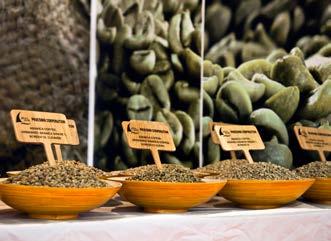
TriestEspresso Expo’s 2016 edition, organised by Aries – Trieste’s Chamber of Commerce, in cooperation with Associazione Caffè Trieste – brought together 200 exhibitors and 12,500 visitors from over 83 countries. They gathered in the very city that was deservedly proclaimed Capital of coffee, thanks to the great number of local companies operating in this field, from logistics, to roasting, to decaffeination – with the exception of production, which necessarily takes place in extra-European countries, where coffee is grown.
This year’s additions to the event include the new TriestEspresso Campus and parking lot, in Barcola’s embankment, with public transport connections to the rest of the city. So once again, even if for just a few days (from 25th to 27th October), the scent of coffee will permeate the renovated warehouses of Porto Vecchio, as it used to centuries ago. [PDC]
Expo,
TriestEspresso Expo, and with it Trieste as a whole, have become a reference point for companies working in the coffee sector
—
TriestEspresso
e quindi Trieste, in questi anni sono diventati un preciso punto di riferimento per tutte le aziende che operano nel mondo del caffè
14 TRIESTE LIFESTYLE IES N°3 — September 2018 Città da scoprire
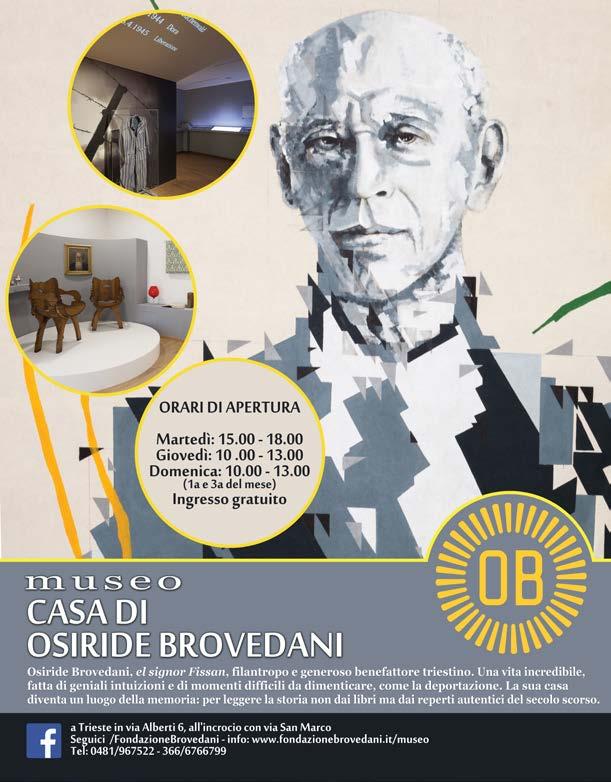
Caffè sul mare
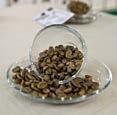
Una storia lunga oltre 300 anni: è così che Trieste ha conquistato il marchio registrato Trieste Capitale del Caffè® e uno degli appuntamenti più importanti tornerà a vivere dal 25 al 27 ottobre: TriestEspresso Expo, ospiterà nei suggestivi magazzini del Porto Vecchio, l’antico scalo portuale della città, la nona edizione della fiera professionale dedicata alla filiera dell’espresso. Contemporaneamente, nella Centrale Idrodinamica, icona di archeologia industriale, sarà allestito il Campus di TriestEspresso, vera novità di quest’anno. Il Campus, cuore delle iniziative collaterali, sarà diviso in tre macroaree tematiche focalizzate su tostatura, Green2Roast, accoppiata estrazioneinnovazione, Bean2cup, e formazione, Meet2Learn. La manifestazione é organizzata dalla Camera di Commercio Venezia Giulia in collaborazione con l’Associazione Caffè Trieste, una delle più antiche associazioni di categoria, fondata nel 1891. L’area espositiva sarà animata da circa 200 espositori: non solo crudisti, torrefazioni, produttori di macchine da caffè e macinacaffè, ma anche accessori e servizi come porcellane, sistemi di imballaggio e spedizionieri. Oltre 12.000 visitatori, di cui il 38% proveniente dall’estero, potranno ammirare una vetrina dei migliori prodotti made in Italy. Protagonista fra tutti il comparto locale altamente specializzato che copre l’intera filiera produttiva. Spazio

anche alle start up del mondo del caffè: quattro progetti selezionati, la cui attività possa rilevarsi utile all’industria del caffè, avranno a disposizione una postazione espositiva gratuita e dovranno presentare il loro progetto a referenti qualificati. Non mancheranno, infine, corsi di formazione realizzati dall’Istituto Internazionale Assaggiori di Caffè), Umami Area e illy Università del Caffè dove si potrà imparare a degustare l’espresso italiano e effettuare una prova di esame per ottenere la patente di assaggiatore.



[PDC]
Coffee on the sea
Three centuries of relentless efforts that culminated in the registered trademark Trieste Capitale del Caffè® (lit. Trieste Capital of Coffee). Trieste won this title also thanks to one of the city’s most important, coffeerelated events: TriestEspresso Expo, the biennial business fair dedicated to the entire production and supply chain of coffee, which this year celebrates its 9th edition. It will take place from 25th to 27th October in the evocative warehouses of Porto Vecchio, the former city’s seaport. TriestEspresso Campus, this year’s addition, will run parallel to the Expo and close nearby, at the hydrodynamic power station, a real icon of industrial archaeology: it will include three main themes, corresponding to three distinctive lines of events, namely Green2Roast –focusing on coffee roasting; Bean2cup – on the synergy of extraction and innovation; and Meet2Learn – a series of training workshops. The Expo is organised by Camera di Commercio Venezia Giulia in cooperation with Associazione Caffè Trieste, one of the city’s oldest trade associations, established in 1891. The exhibition surface will host approximately 200 exhibitors, mainly raw coffee bean suppliers; roasting companies; producers of coffee-machines, roasting plants, doser coffee grinders, and coffee mills; but also accessory suppliers, such as chinaware producers, and service providers, such as packaging and shipping
companies. In 2016 the Expo welcomed more than 12,000 visitors, 38% of which were international guests – this year an even wider public will reach Trieste to visit this most impressive showcase of the cream of Italian products. This edition’s flagship will be the local coffee sector, a highly specialised business environment covering every stage of the production chain. Start-up companies will enjoy a special privilege this year: four projects, selected on the basis of their relevance and potential contribution to the coffee industry, will be granted
a free exhibition space, where they can present their ideas to a qualified audience of professionals. The Expo will also include a series of training workshops designed jointly by the International Institute of Coffee Tasters, Umami Area, and illy Università del Caffè, teaching the best way to taste Italian espresso and offering a final test to those who wish to obtain their taster licence.
[PDC]
16 TRIESTE LIFESTYLE IES N°3 — September 2018 Città da scoprire
Come ordinare un caffè a Trieste
How to order a coffee in Trieste
Trieste, si sa, è una città di matti… tanto che per ordinare un caffè i triestini hanno creato un lessico tutto loro, che comprende decine e decine di modi non solo di ordinare un caffè, ma soprattutto di gustarlo. Alcuni esempi? Un semplice espresso diventa “un nero”, un caffè macchiato diventa “un capo”. Se lo vuoi decaffeinato devi chiedere “un nero deca” o “un capo deca”. Da non tralasciare poi, per entrambi, la variante in bicchiere, “in b”, che ovviamente può essere pure “deca”. C’è anche il “capo in b tanta”, che è un espresso caldo con “tanta” schiuma”. E se vuoi un cappuccino? Ordina “un caffellatte”, ma se vuoi un caffè con solo un po’ di latte, allora non hai scelta: devi ordinare un “goccia” che, puoi esserne certo, il barista avrà cura di collocare proprio al centro dalla tazzina! [PDC]
As everyone knows, Trieste is a quirky city – so much so that when it comes to ordering coffee, they’ve invented their own phrasebook that includes dozens of different ways not only of ordering coffee but also of enjoying it. Some examples? A simple espresso becomes “un nero”, a caffè macchiato is “un capo”. If you’d prefer decaffeinated coffee, you need to ask for “un nero deca” or “un capo deca”. Both can be served in a small glass “in b” [“b” stands for “bicchiere”]. There’s also the “capo in b tanta”, which is a hot espresso with lots of milk froth. And if you want a cappuccino? Order a “caffelatte”, but if you want a coffee with very little milk, you have no choice, you have to order a “goccia” and the barista will take care to put just a drop of milk in the centre of the cup! [PDC]
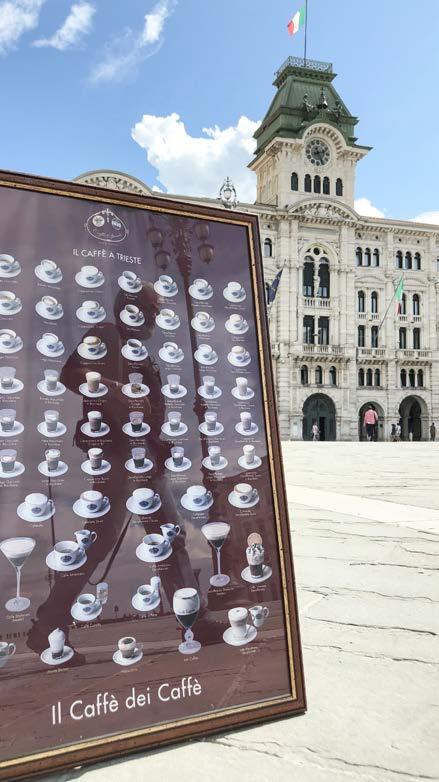
–
–
17 TRIESTE LIFESTYLE IES N°3 — September 2018 Discover rhe city
Università per una ‘laurea’ speciale in espresso e cappuccino
An original University degree in espresso and cappuccino
DOTTOR CAFFÈ
di /by Giovanni Marzini
Sotto la scritta stradale “Trieste”, in una delle porte d’ingresso alla città, puoi trovare un cartello più piccolo con scritto sopra “la città del caffè”. È comparso qualche anno fa, dopo che sotto il cartello stradale, in altri accessi alla cinta urbana era comparsa la scritta “città della Barcolana”. I triestini ci hanno scherzato sopra, come sempre con un pizzico di ironia che ricordava come Trieste fosse stata più volte ribattezzata, come città della Bora, piuttosto che della Scienza e via dicendo…
Ma a pensarci bene il “brand” di quella che è la miscela più bevuta al mondo, in effetti sposa al meglio l’identificazione con quest’ultimo lembo d’Italia, in alto a destra, nella carta geografica dello stivale. E la conferma giunge puntuale quando varchi la soglia dello stabilimento “illy” che sorge nel cuore della zona industriale di Trieste, a una manciata di chilometri dal confine con la Slovenia. Alle pareti dell’accogliente open space subito dopo la reception, tra le gigantografie delle foto di Sebastiao Salgado, spiccano in rilievo le parole simbolo dell’etica di
questa azienda: eccellenza, sostenibilità, ricerca, cultura, qualità, rispetto. Potresti riassumerla in un’ultima parola: amore. Alla base di tutto ciò, che non deve comunque sembrare né spropositato né eccessivo se lo rapportiamo a quella che può sembrare la banalità del più quotidiano dei gesti (bere una tazzina di caffè!), sta l’idea di Ernesto Illy, ideatore dell’Università del Caffè. Un progetto che ha quasi venti anni di vita e che dà la misura dello spessore di un marchio che altro non può essere se non leader mondiale in questo settore.
Con il direttore dell’Università, Moreno Faina, che da dieci anni ormai guida un ristretto ma qualificato team di collaboratori, percorriamo il tragitto che ormai migliaia di visitatori hanno fatto in questi anni a Trieste: come semplici visitatori, ma anche e soprattutto come “studenti” di una università veramente particolare. Dove impari a gustare, distinguere, preparare il miglior caffè possibile… Operatori del settore, ma anche semplici appassionati, professionisti del caffè o semplici turisti. Arrivano a Trieste per motivi
—
18 TRIESTE LIFESTYLE IES N°3 — September 2018 Città da scoprire
di lavoro o in vacanza e attraverso la ricca comunicazione social dell’azienda prenotano una visita in illy o ancor meglio un corso (ce ne sono di rapidissimi che durano un giorno soltanto) all’Università del caffè. Ernesto Illy la pensò e concepì per sostenere e migliorare l’intera filiera illycaffè proprio attraverso la formazione e la divulgazione della cultura del caffè di qualità e dell’eccellenza. Il tutto attraverso un vero e proprio network internazionale che oltre alla sede triestina vanta una trentina di succursali sparse in quattro continenti, a supporto dei fornitori, dei collaboratori ma anche dei semplici clienti illy: per assicurare e certificare il più alto livello di qualità, in ogni mercato, paese e cultura.
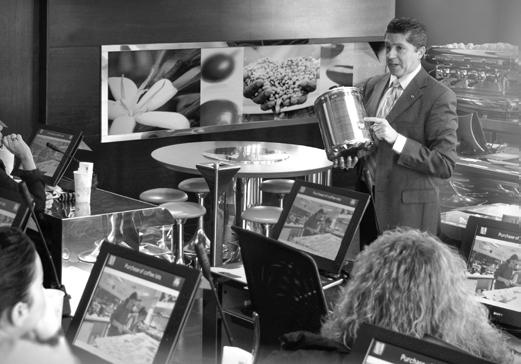
Corsi di formazione e divulgazione per arrivare a una sempre più profonda conoscenza del prodotto rappresentano l’essenza di questo particolare “ateneo del gusto” che nelle sue ovattate aule didattiche, dal 2000 a oggi, ha formato più di 200mila persone, in mezzo a computer di ultima generazione e macchine per la realizzazione dell’espresso sempre più aggiornate e sofisticate, che i tecnici triestini
testano periodicamente prima di promuoverle e autorizzarle a preparare un caffè illy. Una particolare università, quella triestina del caffè, che fonda la sua autorevolezza, fin dal 1933 quando illycaffè ha iniziato un lungo percorso di ricerca e innovazione riservato al prodotto.
Basti pensare che dal 2000 a oggi più di 9.000 produttori hanno partecipato ai programmi formativi e l’obiettivo è quello di coinvolgere la totalità dei fornitori di caffè verde, sino a completare la filiera del caffè dalla pianta a quello che assaggiano in tazzina i clienti. All’Università del Caffè tutto ciò viene raccontato con la passione dettata dall’amore per un lavoro che va avanti da oltre 30 anni e qua non facciamo fatica a credere che solo un espresso o un cappuccino preparati alla perfezione possono donare il vero “piacere” nel gustare la bevanda più diffusa al mondo.
Credo possa bastare per inserire una visita alla illy e alla sua Università del Caffè tra i “must” di un soggiorno a Trieste, città della Scienza, della Barcolana, della Bora… ma oggi più che mai, di diritto, “Città del caffè”!
Corsi di formazione e divulgazione della cultura del caffè per arrivare a una sempre più profonda conoscenza del prodotto rappresentano l’essenza di questo particolare
“ateneo del gusto”
19 TRIESTE LIFESTYLE IES N°3 — September 2018 Discover rhe city
— Education and information activities help disseminate and enhance knowledge of high-quality coffee, which is the very essence of this “academy of taste”
Under the road sign indicating one of the entry points to the city of Trieste, a second, smaller sign reads “City of coffee”. It appeared out of the blue, a few years ago, after another sign had been added to the main signpost, reading “City of Barcolana”. Locals started to make jokes about it, with the same ironic attitude with which they had accepted the fact that Trieste had become more famous for its local wind Bora, rather than its scientific excellence…
On second thought, however, the new city “brand” declaring its link to the most popular blend in the world is actually quite fitting to describe Trieste, this remote edge of Italy in the upper-right corner of the Italian boot. Witness, for instance, the threshold of illy’s production plant in the very heart of Trieste’s industrial area, almost on the border with Slovenia: its welcoming open-space reception area is decorated with Brazilian photographer Sebastião Salgado’s billboard pictures, whose images effectively highlight the keywords printed in-between, that symbolise the company’s ethics: excellence, sustainability, research, culture, quality, respect. Words that could be merged into one: love. It may seem an exaggeration when thinking about the banality that is drinking a cup of coffee, and yet these words are the pillars of the work of Ernesto Illy – the man who invented the University of Coffee. His almost twenty-year-old project confirms the calibre of the trademark that is no less than a world leader in its sector.
The University Headmaster Moreno Faina, who has been in charge of the University’s selected team of professionals for the past ten years, leads our delegation through the itinerary that thousands of visitors have followed before us, as “students” of this most peculiar institution. A place that teaches the art of tasting, identifying,
and making the best possible coffee… Pupils range from specialised operators to coffee professionals, from intrigued tourists to, more simply, aficionados. They may be in Trieste for work or for leisure, but, once there, it is hard to miss illy company’s intense activity on social media. So they land at the University of Coffee, either for a tour, or, even better, for a course (there is a very broad offer, including one-day intensive seminars). Ernesto Illy’s vision aimed at promoting and strengthening the company through an effective dissemination of its values, first and foremost the values of excellence and high-quality coffee. Hence the creation of a truly international network, starting in Trieste and stretching out towards four different continents through its more than thirty branch offices. Their task is to offer support to illy suppliers, employees, and customers, by ensuring the company’s certified highest level of quality in every market, country, and culture.
Education and information activities help disseminate and enhance knowledge of the company’s products, which is the very essence of this “academy of taste”, where more than 200,000 students have been trained since 2000. Every classroom is equipped with the newest hi-tech products, including latest-generation computers and espresso machines – highly sophisticated pieces of equipment that are regularly tested by in-house specialised technicians before being released to the market with an Illy quality-control certificate. The University’s authoritative mark rests on the broad shoulders of the company’s experience, dating back to 1933, when illycaffè’s story of research and innovation was born.
Suffice it to mention the 9,000 producers that have been attending illy’s training seminars since 2000, a milestone in the company’s effort to reach out to the entire community of green coffee suppliers, in order to certify its quality throughout the whole production chain, from root to cup. This and much more is taught at the University of Coffee, with a passion that stems from a more than thirty-year-old love for this job – and at this point it is hard to question those who believe that only a perfectly made espresso or cappuccino may bring the true pleasure of tasting the most popular drink in the world.
I believe that this is enough to spark the readers’ desire to visit Illy’s company and University of Coffee during their stay in Trieste – city of Science, Barcolana, Bora… but mostly, and well-deservedly, “City of coffee”!
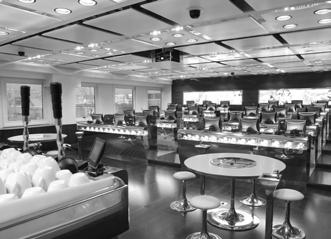
ENGLISH TEXT
Dal 2000 l’Università del Caffè ha formato più di 200mila persone –
20 TRIESTE LIFESTYLE IES N°3 — September 2018 Città da scoprire
Since 2000 more than 200,000 students have been trained at the University of Coffee
CHICCHE E CHICCHI AL MUSEO –MUSEUM GEMS AND BEANS
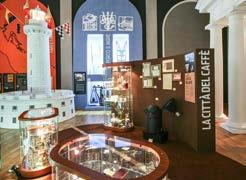
C’è un macinino da caffè della Peugeot, la casa automobilistica che inizialmente produceva proprio macinacaffè, ma anche una tessera annonaria del 1917/18 che testimonia quanto quotidiano fosse il consumo di caffè anche in tempo di guerra, insieme a preziose caffettiere, eleganti macinini, raffinate tazzine di fine ’800. Sono le chicche del Museo del Caffè di Trieste, allestito dall’Associazione ‘Museo del Caffè’ nel Museo Commerciale (via San Nicolò, 7) della Camera di Commercio della Venezia Giulia, dopo l’avvio nel 2001 nella Torre del Lloyd dell’Autorità Portuale. Una vetrina raccoglie elementi portuali, una seconda ospita richiami ai blasonati Caffè storico-letterari, una terza unisce articoli frutto di partenariati fra Musei Europei del Caffè (Germania, Svizzera,
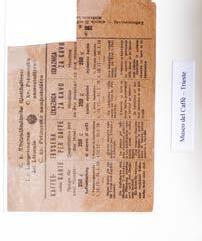
Austria, Francia, Ungheria, Olanda, Cipro e Belgio).
Ci sono poi le curiosità di marketing: l’omino con i baffi, “Caballero e Carmencita”, le bustine di zucchero che richiamano i nobili antichi locali, cartoline d’epoca, pregiati documenti, e ancora, contenitori in latta o vetro che hanno fatto la storia del caffè e altre rarità. Fra queste, i chicchi del famoso e costoso caffè monorigine indonesiano Kopi Luwak. Lo vendono a oltre 600 euro al chilo... e al Museo del caffè si può scoprire perchè!
There is a coffee grinder made by Peugeot, the automaker label that started as coffee grinder producer; there is also a ration book dating back to 1917-1918, evidence to the fact that coffee was considered a staple good even in time of war; and then there are precious coffee pots, stylish coffee grinders, and exquisite coffee cups of the late Nineteenth century. These are the gems of Trieste’s Museo del Caffè [Coffee Museum], arranged by ‘Associazione Museo del Caffè’ in the Lloyd Tower building owned by the Port Authority, until 2001, when it was moved to its present location, the Museo Commerciale building owned by the Chamber of Commerce (via San Nicolò n°7). The museum itinerary includes a series of themed glass cases: one for the port, one for the blazoned halls of
famous historic and literary Cafes, and one displaying objects exchanged with partner museums from all over Europe (Germany, Switzerland, Austria, France, Hungary, the Netherlands, Cyprus, and Belgium). There is even a section entirely dedicated to coffee marketing products: Bialetti’s iconic Little Man with Moustache; Lavazza’s cartoon figures “Caballero and Carmecita”; sugar packets with depictions of local nobility figures from the past; vintage postcards; valuable documents; traditional coffee containers, such as tin cans and glass jars; and much more. The Museum’s most rare pieces include beans of famous and expensive Indonesian coffee cru Kopi Luwak, valued 600 Euros per kilo… and a visit to the Museo del Caffè explains why!

21 TRIESTE LIFESTYLE IES N°3 — September 2018 Discover the city
di /by Gianni Pistrini
LA DIFFERENZA C’È e te la raccontiamo!
LA DIFFERENZA C’È e te la raccontiamo!
lo Spaghetto Eataly

Spaghetti di Gragnano IGP “Afeltra” 100% grano italiano, olio extravergine d’oliva “Roi” Cultivar Ogliarola-Taggiasca 100% italiano, pomodoro datterino rosso “Così Com’è” della Piana del Sele (Salerno) raccolto maturo e conservato in succo, basilico fresco e sale integrale siciliano.
Spaghetti di Gragnano IGP “Afeltra” 100% grano italiano, olio extravergine d’oliva “Roi” Cultivar Ogliarola-Taggiasca 100% italiano, pomodoro datterino rosso “Così Com’è” della Piana del Sele (Salerno) raccolto maturo e conservato in succo, basilico fresco e sale integrale siciliano.
€ 8,50
8,50
A F E LT R A
A F E LT R A
Il Premiato Pastificio Olimpio Afeltra è stato fondato nel 1848 e si trova nel cuore di Gragnano(NA). Seleziona le migliori semole di grano duro. Impasto e preimpasto avvengono sottovuoto, in modo lentissimo e utilizzando la purissima acqua dei Monti Lattari di Gragnano. La trafilatura è unicamente a bronzo e l’essiccazione dura dalle 24 alle 52 ore, con temperature che non superano mai i 48 gradi. Il risultato è una pasta ad alta digeribilità, con altissimi valori nutrizionali.
Il Premiato Pastificio Olimpio Afeltra è stato fondato nel 1848 e si trova nel cuore di Gragnano(NA). Seleziona le migliori semole di grano duro. Impasto e preimpasto avvengono sottovuoto, in modo lentissimo e utilizzando la purissima acqua dei Monti Lattari di Gragnano. La trafilatura è unicamente a bronzo e l’essiccazione dura dalle 24 alle 52 ore, con temperature che non superano mai i 48 gradi. Il risultato è una pasta ad alta digeribilità, con altissimi valori nutrizionali.
Dall’antipasto al dolce...tutto in un unico ristorante: l’ . Osteria del Vento Tutti i giorni ti proponiamo il menu ideale per i tuoi pranzi e le cene: l’executive Chef rielabora con creatività i piatti Vincenzo Vitola
Dall’antipasto al dolce...tutto in un unico ristorante: l’ . Osteria del Vento Tutti i giorni ti proponiamo il menu ideale per i tuoi pranzi e le cene: l’executive Chef rielabora con creatività i piatti Vincenzo Vitola della tradizione, ponendo attenzione alla qualità delle materie prime e in particolar modo del pesce, di primissima sceltaOvviamente non può mancare la nostra pizza, preparata secondo le regole ! della più antica tradizione napoletana... rigorosamente cotta nel nostro forno a legna.
della tradizione, ponendo attenzione alla qualità delle materie prime e in particolar modo del pesce, di primissima sceltaOvviamente non può mancare la nostra pizza, preparata secondo le regole ! della più antica tradizione napoletana... rigorosamente cotta nel nostro forno a legna.
...non ti resta che venire a trovarci!
...non ti resta che venire a trovarci!
Prenota subito il tuo tavolo, chiama al numero 0402465707
Prenota subito il tuo tavolo, chiama al numero 0402465707
Riva Tommaso Gulli, 1 Trieste mangi meglio, vivi meglio Per informazioni: eatalytrieste@eataly.it +39 040 2465701 Per prenotazioni all’Osteria del Vento: +39 040 2465707
DAL 1848 PREMIATO PASTIFICIO
€
lo Spaghetto Eataly
Tommaso Gulli, 1 Trieste mangi meglio, vivi meglio Per informazioni: eatalytrieste@eataly.it +39 040 2465701 Per prenotazioni all’Osteria del Vento: +39 040 2465707
Riva
DAL 1848 PREMIATO PASTIFICIO
LO SAI CHE DA EATALY PUOI ANCHE IMPARARE?
LO SAI CHE DA EATALY PUOI ANCHE IMPARARE?
in aula didattica
in aula didattica
I CORSI DI CUCINA
I CORSI DI CUCINA
FAMIGLIE E BAMBINI
FAMIGLIE E BAMBINI
aEatalyTrieste nuovi corsi enogastronomici
aEatalyTrieste nuovi corsi enogastronomici
CORSI DI DEGUSTAZIONE
CORSI DI DEGUSTAZIONE
A TUTTO PESCE
A TUTTO PESCE
Mercoledì 6 novembre |19.00 - 22.00
Mercoledì 6 novembre |19.00 - 22.00
Questa sera potrai cimentarti in un’impresa da capo a coda, nel vero senso della parola! Sotto la guida dello chef Edoardo Biagiotti potrai studiare il pesce sotto ogni punto di vista. La lezione affronterà quattro fasi. Nel dettaglio: la pulizia del pesce intero, lo sfilettamento, la cottura e infine l’impiattamento guarnito. Sarà un’occasione davvero interessante, non fartela sfuggire!
Questa sera potrai cimentarti in un’impresa da capo a coda, nel vero senso della parola! Sotto la guida dello chef Edoardo Biagiotti potrai studiare il pesce sotto ogni punto di vista. La lezione affronterà quattro fasi. Nel dettaglio: la pulizia del pesce intero, lo sfilettamento, la cottura e infine l’impiattamento guarnito. Sarà un’occasione davvero interessante, non fartela sfuggire!
I DOLCI DELLE FESTE
I DOLCI DELLE FESTE
Giovedì 29 novembre | 19.00 – 22.00
Giovedì 29 novembre | 19.00 – 22.00
Sei appassionato di dolci e vuoi imparare a realizzare un piatto tipico della cucina triestina? Sotto la guida dello chef Edoardo Iurkic, cuoco all’Eppinger Caffe' di Trieste, potrai cimentarti in due dolci ricette locali: la putizza e la pinza.
Sei appassionato di dolci e vuoi imparare a realizzare un piatto tipico della cucina triestina? Sotto la guida dello chef Edoardo Iurkic, cuoco all’Eppinger Caffe' di Trieste, potrai cimentarti in due dolci ricette locali: la putizza e la pinza.
MANI IN PASTA
MANI IN PASTA
Domenica 28 ottobre |16.00 – 18.30
Domenica 28 ottobre |16.00 – 18.30
Acqua, farina, e... tanta fantasia! Un appuntamento dedicato ai più piccoli che, accompagnati da un adulto, si cimenteranno nella realizzazione di impasti e sfiziosi formati di pasta fresca da condire con gustosi sughi. Sarà la formatrice Slow Food Gloria Bidinot, a guidare grandi e piccini in questo laboratorio che divertirà tutti!
Acqua, farina, e... tanta fantasia! Un appuntamento dedicato ai più piccoli che, accompagnati da un adulto, si cimenteranno nella realizzazione di impasti e sfiziosi formati di pasta fresca da condire con gustosi sughi. Sarà la formatrice Slow Food Gloria Bidinot, a guidare grandi e piccini in questo laboratorio che divertirà tutti!
PANE, SALAME & VINO
PANE, SALAME & VINO
Giovedì 4 ottobre |19.00 – 21.30
Giovedì 4 ottobre |19.00 – 21.30
Da sempre la merenda povera che accompagnava il duro lavoro nei campi, questo trinomio caratterizzato da grande semplicità è anche in grado di dare grande soddisfazione. Ovviamente ci sono salami e salami, quindi preparate le papille per l'assaggio di alcune eccellenze…3 salami e 3 vini. A guidarvi in questo percorso di degustazione l'esperto assaggiatore di salumi nonché Sommelier e formatore Slow Food Stelio Smotlak.
Da sempre la merenda povera che accompagnava il duro lavoro nei campi, questo trinomio caratterizzato da grande semplicità è anche in grado di dare grande soddisfazione. Ovviamente ci sono salami e salami, quindi preparate le papille per l'assaggio di alcune eccellenze…3 salami e 3 vini. A guidarvi in questo percorso di degustazione l'esperto assaggiatore di salumi nonché Sommelier e formatore Slow Food Stelio Smotlak.


E PER FINIRE IN BELLEZZA... GLI APPUNTAMENTI SPECIALI!
E PER FINIRE IN BELLEZZA... GLI APPUNTAMENTI SPECIALI!
In occasione della Giornata mondiale del Diabete, parliamo di come mangiare con gusto ma con un occhio alla prevenzione. Imparare a ridurre gli zuccheri significa guadagnare in salute e permette di assaporare il vero gusto dei piatti. Insieme alla Dott.ssa Benedetta Bacco parleremo di pratici consigli quotidiani per appagare il palato mangiando in maniera più sana. Al termine dell'incontro, ci sarà la dimostrazione di una ricetta veloce e sana.
In occasione della Giornata mondiale del Diabete, parliamo di come mangiare con gusto ma con un occhio alla prevenzione. Imparare a ridurre gli zuccheri significa guadagnare in salute e permette di assaporare il vero gusto dei piatti. Insieme alla Dott.ssa Benedetta Bacco parleremo di pratici consigli quotidiani per appagare il palato mangiando in maniera più sana. Al termine dell'incontro, ci sarà la dimostrazione di una ricetta veloce e sana.
PRENOTA SU WWW.EATALY.IT, AL NOSTRO INFO-POINT
O CHIAMA IL NUMERO 0402465701
Eataly Trieste
Eataly Trieste
Aperto da domenica a giovedì dalle 9,00 alle 22,30
Aperto da domenica a giovedì dalle 9,00 alle 22,30
Venerdì e sabato dalle 9,00 alle 24,00
Venerdì e sabato dalle 9,00 alle 24,00
seguici anche su mangi meglio, vivi meglio
www.eataly.it
¤ 35
¤ 50
¤ 45 1 adulto e 1 bambino ¤ 65 ¤
LA SALUTE È PIÙ DOLCE... SENZA ZUCCHERO! Mercoledì 14 novembre
21.00
35
|19.00 –
¤ 35
www.eataly.it seguici anche su mangi meglio,
vivi meglio
¤
¤ 35
50
PRENOTA SU WWW.EATALY.IT, AL NOSTRO INFO-POINT O CHIAMA IL NUMERO 0402465701
¤ 45 1 adulto e 1 bambino ¤ 65 ¤ 35 LA SALUTE È PIÙ DOLCE... SENZA ZUCCHERO! Mercoledì 14 novembre |19.00 – 21.00 ¤
35
Una festa lunga 10 giorni
In quell’ottobre del 1969 le barche in mare erano 51: con quella regata, che aveva trovato posto nel fitto calendario velico triestino solo nella seconda domenica d’ottobre, i soci della Velica di Barcola e Grignano volevano chiudere la lunga stagione estiva. Una festa, più che una competizione: aperta a tutti, soprattutto a tutti i tipi di imbarcazione, senza distinzioni di classe o stazza. Sarebbe stato questo lo spirito che avrebbe animato la Barcolana per 50 anni, fino all’edizione numero 49, che di barche in mare ne ha messe più di duemila.
La lunga festa triestina del mare inizia quest’anno il 5 di ottobre per chiudersi domenica 14, quando l’ultima delle vele in mare taglierà il traguardo dell’edizione numero 50. Dieci giorni con oltre 300 eventi, tra concerti, mostre, incontri, conferenze e ovviamente… regate. Queste ultime condensate nelle ultime tre giornate con la regata della Lega Navale il 12, la Barcolana Classic con barche d’epoca, la Barcolana by Night e la Barcolana Generali Cup il giorno 13, fino al colpo di cannone che nella mattinata del 14 darà il via alla Barcolana del mezzo secolo!
A Ten-day festival
In October 1969 the sailboats at sea were 51: with this regatta the members of the Sailing Club Società Velica di Barcola e Grignano wanted to celebrate the end of the long summer season. They managed to find a date in Trieste’s rich sailing calendar and chose the second Sunday of October. The event is a festival rather than a competition: it is open to everybody and to all types of boats of any class or size. This has been the spirit of the Barcolana for 50 years and regatta number 49 featured over two thousand boats at sea. This year the long Triestine sea festival will start
on 5th October and end on Sunday 14th, when the last sailboat will cross the finish line. Ten action-packed days with over 300 events, among which concerts, exhibits, meetings, conferences and of course… regattas. The sailing races will be held during the last three days: the Lega Navale race on 12th October, Barcolana Classic featuring vintage and classic sailboats, Barcolana by Night and Barcolana Generali Cup on 13th October and finally on 14th October the gun will signal the start of the half century Barcolana sailing race!
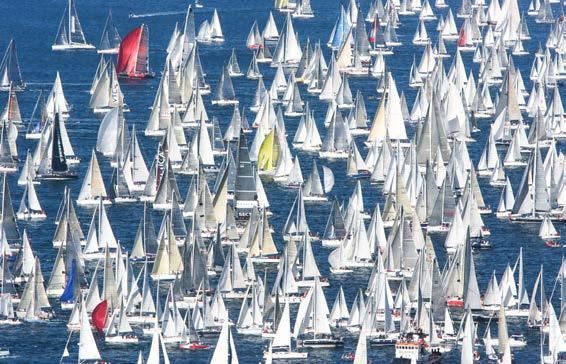
50 VOLTE BARCOLANA 24 TRIESTE LIFESTYLE IES N°3 — September 2018 Città da scoprire
Mauro
Mauro Pelaschier, velista che non ha bisogno di presentazioni sulla terraferma (ma se dovessero servire, bastino due Olimpiadi, due edizioni di Coppa America con la mitica Azzurra, l’impegno come commentatore sportivo), alla domanda “Ma a quante Barcolane hai partecipato?” risponde sincero “Mah, ho perso il conto!”, sorridendo sotto la frangia e la barba, che lo fanno diventare la vera icona dell’uomo di mare. Ed è lui che può raccontarci un po’ di storia e segreti di una manifestazione che a 50 anni dal suo debutto riesce ancora a macinare successi. Il più importante: essere diventata nel 2017 la regata più affollata al mondo con 2.101 scafi sulla medesima linea di partenza.
Com’è nata la Barcolana a Trieste?
“Forse non tutti conoscono la storia di questa regata. Nel 1968 la Società Velica di Barcola e Grignano (anzi, all’epoca solo di Barcola!) era appena stata fondata e i suoi soci cercavano di inserire una loro manifestazione nel calendario locale. L’unica data disponibile risultò essere quella meno appetibile: la seconda domenica di ottobre. Era l’ultima regata dell’anno e venne battezzata Coppa d’Autunno. Era quindi l’ultimo momento per
incontrarsi prima di disarmare le barche per l’inverno.”
La voglia di dirsi arrivederci all’anno nuovo è stata la prima molla a far iscrivere tante barche?
“Certo, ma si è aggiunta l’idea geniale della formula semplicissima: correre in classi divise per lunghezza fuori tutto. All’inizio la Barcolana era una regata pazza, dove tutto era permesso. Si cercavano vele sovradimensionate, si aggiungevano trapezi per permettere all’equipaggio di mettersi completamente fuoribordo. Oggi per questioni di sicurezza tutto ciò non è più possibile, ma lo spirito è rimasto.”
In che senso?
“Solo in Barcolana ti può capitare di dover passare su dieci coperte di barche di sconosciuti per raggiungere la tua, che è ormeggiata come undicesima. I partecipanti si impossessano della città. Trieste e la vela nel weekend di Barcolana sono un tutt’uno e di questa magia partecipano non solo gli iscritti, bensì chiunque cammini sulle Rive. Sono giornate realmente speciali, nelle quali l’atmosfera triestina diventa frizzante.”
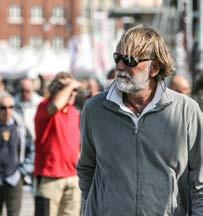
Che cosa ti spinge a partecipare alla Barcolana?
“Per me significa ritrovare tanti
L’UOMO E IL MARE
Pelaschier: “Duemila buoni motivi per essere in Barcolana”
— Mauro Pelaschier:
“Two thousand good reasons to take part in the Barcolana”
25 TRIESTE LIFESTYLE IES N°3 — September 2018 Discover rhe city
di /by Francesca Pitacco
amici e spesso far conoscere una città e una manifestazione incredibile a chi magari arriva a Trieste per la prima volta. Sono sicuro però che ognuno ha la sua motivazione. Posso tranquillamente affermare che ci sono almeno duemila buoni motivi per esserci!”
Qualche ricordo speciale?
“Ricordo gli anni divertentissimi a bordo del Bucaniere di Gildo Degrassi con il mio amico Dani. Sua mamma ci preparava le palacinke per merenda e la giornata finiva mangiando jota. Non ho mai concepito la Barcolana come una regata da dover vincere per forza, anche se tagliare per primi il traguardo alla 30a edizione con Riviera di Rimini è stata un’emozione indescrivibile.”
E l’edizione numero 50?
“Per me è quella al timone di Viriella, un superyacht di oltre 30 metri di Vittorio Moretti dello Yacht Club Costa Smeralda, testimonial di Charta Smeralda, un codice etico per condividere principi e azioni di tutela dei mari.”
was the busiest regatta in the world with 2101 boats at the starting line.
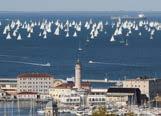
How was the Barcolana born in Trieste?
of safety all of this is no longer possible, but the spirit has stayed the same.”
What do you mean?
“Only during the Barcolana do you walk over 10 other strangers’ boats to get to your own, the 11th. The participants take over the city. Trieste and sailing are as one during that weekend and it’s not only the crews enrolled in the race that take part but also anyone walking along the seafront. They are really special days, and the atmosphere in Trieste sparkles with excitement.”
What pushes you to take part in the Barcolana?
“For me, it means meeting up with lots of friends and often it gives me the chance to introduce the city and an amazing event to people who are visiting Trieste for the first time. I’m sure that everyone has their own reasons for taking part. I can safely say that there are at least 2.000 good reasons for being there!”
Any special memories?
ENGLISH TEXT
Mauro Pelaschier is a sailor who needs no introduction, but in case you’ve never heard of him, he’s represented Italy twice at the Olympics, been in the America’s Cup twice with the legendary ‘Azzurra’ and is also a sports commentator. When asked “How many Barcolanas have you done?” he replies sincerely “Well, I’ve lost count!”, smiling under his long fringe and white beard, he looks like the archetypal salty sea dog.
He is one of the best people to tell us a bit of the history and secrets of an event which, 50 years from its debut, can still churn out success. The most striking detail of all is that in 2017, the Barcolana
“The history of this regatta may not be known to everyone. In 1968, the Società Velica di Barcola e Grignano (at that time it was only Barcola!) had only just been founded and its members were trying to organise an event that would fit into the local sailing calendar. The only date that was available was the least favourable: the second Sunday in October. It was the last regatta of the year and was christened the Autumn Cup. It was the last opportunity to meet up before laying up the boats for the winter.”
So was it the idea of saying “See you again next year” the main reason why so many boats sign up for the race?
“Of course, but there was also the genius idea of a very simple formula: racing in classes divided by the overall length of the boat. At the beginning the Barcolana was a crazy regatta, where everything was allowed. They looked for oversized sails, they added trapeze harnesses to allow the crew to hang completely outboard. Nowadays for reasons
“I can remember some really fun years on board Gildo Degrassi’s Bucaneer with my friend Dani. His mum made us palacinke [pancakes] to keep us going and the day ended with a bowl of jota [sauerkraut, bean and pancetta soup]. I’ve never seen the Barcolana as a regatta I had to win at all costs, although coming first at the finish line during the 30th regatta with Riviera di Rimini was an indescribable emotion.”
And the 50th?
“This time I’ll be at the helm of Viriella, a superyacht of over 30m that belongs to Vittorio Moretti from the Yacht Club Costa Smeralda. They are representing the Smeralda chart which is an ethical code for sharing best practice for the protection of the seas”.
“Non ho mai concepito la Barcolana come una regata da dover vincere per forza, anche se tagliare per primi il traguardo alla 30a edizione con Riviera di Rimini è stata un’emozione indescrivibile.” —
26 TRIESTE LIFESTYLE IES N°3 — September 2018 Città da scoprire
“I’ve never seen the Barcolana as a regatta I had to win at all costs, although coming first at the finish line during the 30th regatta with Riviera di Rimini was an indescribable emotion.”
Un mare che diventa piazza
È sempre così difficile sintetizzare Barcolana, e raccontarla per immagini è il modo migliore per rendere quell’autentico sentimento che unisce le persone alla regata. A Trieste, il mare è parte fondamentale della vita dei singoli individui; solo grazie alla Barcolana diventa spazio collettivo: per dieci giorni all’anno, essa trasforma quel mare in una piazza nella quale la città si ritrova e si rispecchia. Riscopre una coscienza collettiva profonda che si alimenta nel ricordo dei maestri d’ascia, nell’eredità dei nonni pescatori e di quelli che navigavano sulle rotte del caffè. Ritrova le sue radici e la sua vocazione più autentica e profonda, di crocevia in cui si incontrano le culture latina, slava e tedesca. Risveglia la smodata passione per la Bora –vento d’Europa– che ha accompagnato tante edizioni della Coppa d’Autunno, con un’intensità formidabile nell’anno di apertura del nuovo millennio.
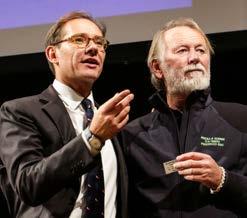
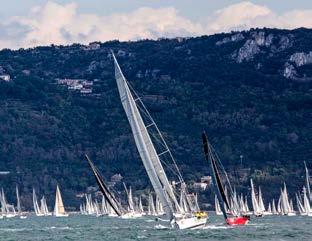
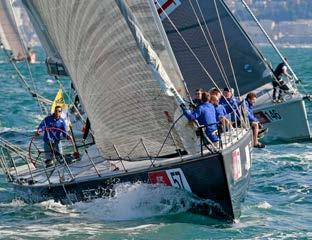
The sea becomes the town square
It’s always so hard to explain Barcolana in a nutshell, so the best way to convey its meaning is through pictures: they transmit the genuine feeling of the strong bond between the people and the regatta. In Trieste, the sea is a fundamental part of life for every single inhabitant and only thanks to Barcolana does it become a collective space: for ten days a year, the Barcolana turns the sea into a sort of ‘town square’. The whole city rediscovers a deep collective awareness that is fuelled by the memory of master shipwrights, the heritage of seafaring family members or ancestors who sailed along the coffee routes. The regatta has it roots and authenticity buried deep in a crossroad of Latin, Slavic and Germanic cultures. It awakens the frenzied passion for the Bora –Europe’s wind– that has featured in so many editions of the so-called Autumn Cup, and which blew at an incredible speed on the first year of the new millennium.
Mitja Gialuz Presidente Società Velica di Barcola e Grignano
27 TRIESTE LIFESTYLE IES N°3 — September 2018 Discover the city
Mitja Gialuz President of the Società Velica di Barcola e Grignano
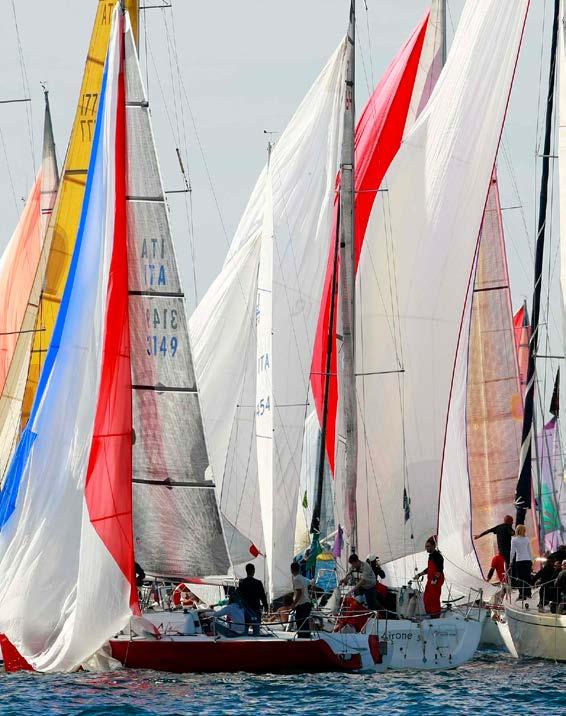
28 TRIESTE LIFESTYLE IES N°3 — September 2018 Portfolio
QUANDO LE VELE COLORANO TRIESTE
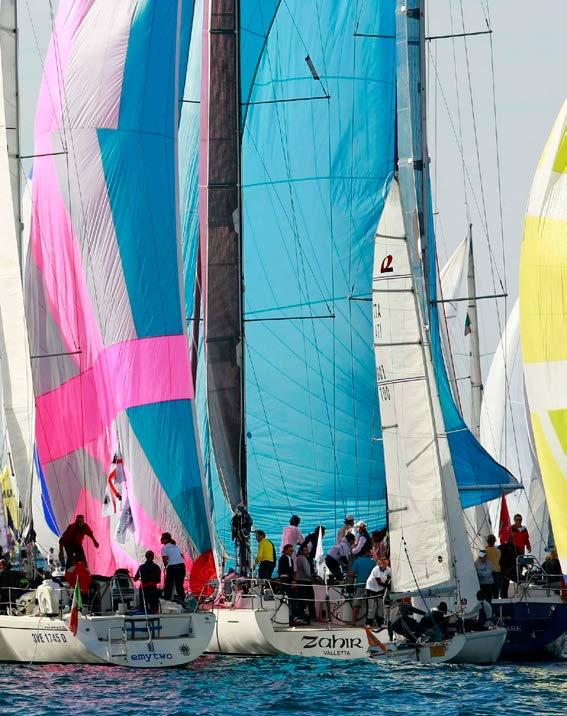
29 TRIESTE LIFESTYLE IES N°3 — September 2018 Portfolio
Foto di /Photo by Andrea Lasorte
PICCOLE VELE CRESCONO
The number of sails grows
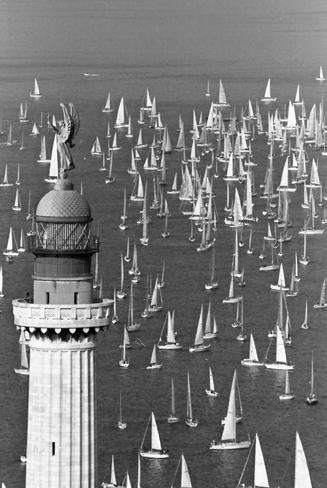
1994 30 TRIESTE LIFESTYLE IES N°3 — September 2018 Portfolio
Barcolana
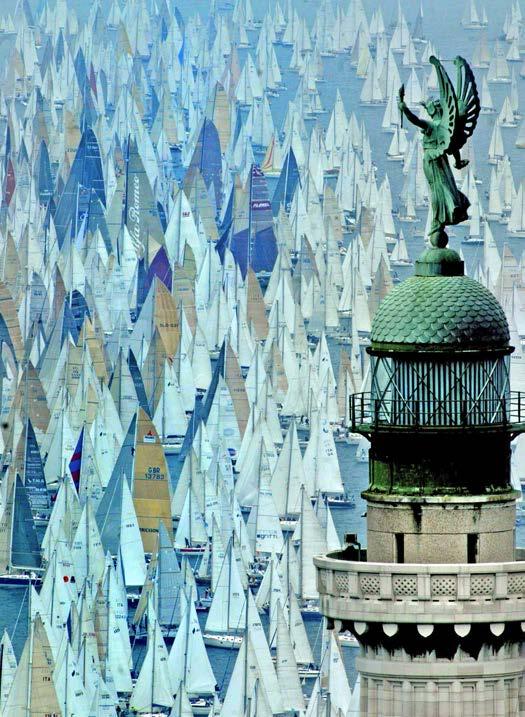
31 TRIESTE LIFESTYLE IES N°3 — September 2018 Portfolio
SULLA CRESTA DELL’ONDA
On the crest of the wave
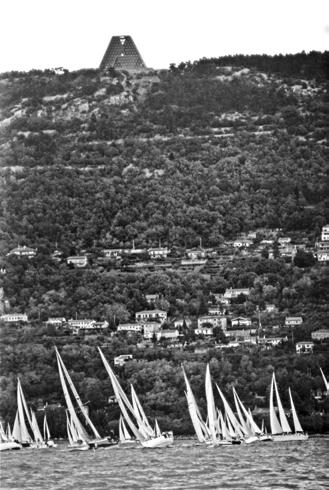
Barcolana 1991 32 TRIESTE LIFESTYLE IES N°3 — September 2018 Portfolio

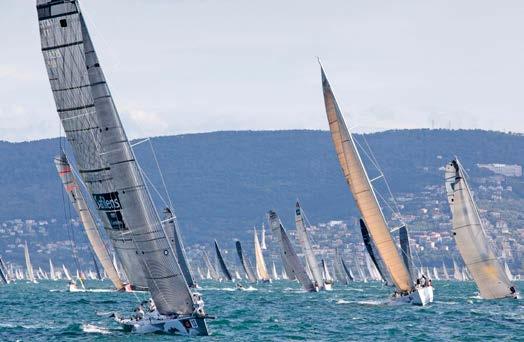
33 TRIESTE LIFESTYLE IES N°3 — September 2018 Portfolio
VISTA DA LONTANO
Viewed from afar

Barcolana 1991 34 TRIESTE LIFESTYLE IES N°3 — September 2018 Portfolio

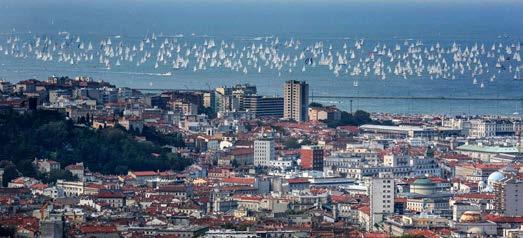
35 TRIESTE LIFESTYLE IES N°3 — September 2018 Portfolio
È QUI LA FESTA?
Is this where the party is?

1990 36 TRIESTE LIFESTYLE IES N°3 — September 2018 Portfolio
Barcolana
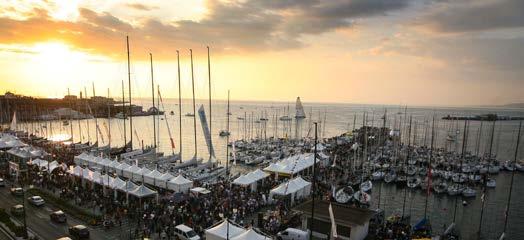
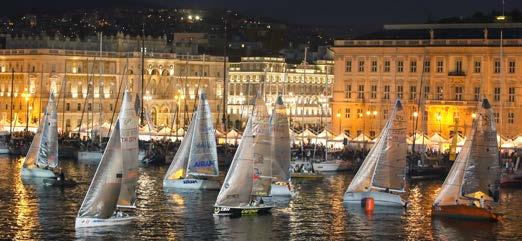
37 TRIESTE LIFESTYLE IES N°3 — September 2018 Portfolio
Andrea Lasorte
Una tradizione con le radici nella storia: nasce in famiglia, lungo ben tre generazioni, il rapporto di Andrea Lasorte con la fotografia e la città di Trieste. La nonna paterna, Erna Rausnitz Lasorte, berlinese di nascita, studia da giovane fotografia e cinematografia. Nei primi anni ’30 fugge dal nazismo e, dopo esperienze come fotografa su navi da crociera, si stabilisce a Trieste. Al termine della guerra, diventa la fotografa ufficiale del Governo Militare Alleato e, dopo il 1954, della Prefettura. Nei primi anni ‘60, con il figlio Enzo, apre, in Via Combi, il negozio Italfoto, ancora oggi gestito dai nipoti Paolo e Sergio. L’intreccio della famiglia Lasorte con Trieste continua con Enzo, papà di Andrea. Nei primi anni ‘70, Enzo diventa il fotografo del quotidiano “Il Piccolo” e, per oltre venti anni, fissa in migliaia di immagini la storia e la cronaca della città. Negli anni ‘90 il testimone passa ad Andrea, che dalla fotografia sportiva passa ben presto al fotogiornalismo a tutto tondo. Nel ‘95 diventa uno dei fotografi del quotidiano “Il Piccolo”, oltre che dell’Agenzia Ansa. Nel 1999 è fra i primi fotografi a passare al digitale: oggi il suo archivio raccoglie milioni di foto della vita quotidiana e della storia di Trieste. [CDL]
A tradition deeply rooted in history: Andrea Lasorte’s passion for photography and the city of Trieste is a family experience spanning over three generations. His paternal grandmother, Erna Rausnitz Lasorte was born in Berlin and when she was young she studied photography and cinematography. In the early 30’s she emigrated to escape Nazism and, after working as a photographer on cruise ships, she settled in Trieste. At the end of the war, she became the official photographer for the Allied Military Government and after 1954 for the Prefecture.
In the early 60’s, she opened the shop Italfoto in Via Combi with her son Enzo, a business that is still in the hands of her grandchildren Paolo and Sergio. Lasorte family’s tight bond with Trieste continued with Enzo, Andrea’s father.
In the early 70s, Enzo was appointed photographer of the local daily newspaper “Il Piccolo” and, for over 20 years, captured the most meaningful moments of Trieste’s history.
In the 90’s the baton went to Andrea, who from his early passion for sport photography has passed to photojournalism.

In 1995 he joined the photographers team of the daily paper “Il Piccolo”, as well as that of the Ansa Agency. In 1999 he has been one of the first to go digital: today his archive contains millions of pictures of the daily life and history of Trieste. [CDL]
Dedicato a Fulvio –
Dedicated to Fulvio
Se la Barcolana è oggi l’evento di Trieste e una delle regate più famose al mondo, lo deve principalmente ad una persona, che si chiama Fulvio Molinari. Da semplice socio della Velica di Barcola e Grignano prima, quindi da dirigente e presidente poi, ma anche e soprattutto da dirigente della RAI per oltre 20 anni, Molinari è stato uno dei principali artefici della crescita esponenziale di un evento che festeggia adesso i cinquant’anni di vita. Questa ineguagliabile festa del mare sotto la sua attenta guida è cresciuta, si è consolidata, varcando i confini cittadini, promuovendosi a livello nazionale ed internazionale, forte di un indissolubile legame tra quest’uomo ed il mare. Non a caso raggiunse da profugo istriano Trieste a bordo di una piccola barca a vela. Non a caso al mare ha dedicato gran parte della sua vita, da giornalista, scrittore, dirigente… semplice velista. Ci ha lasciato troppo presto, nel 2011, a soli 74 anni, raccomandandosi a chi ne avrebbe raccolto l’eredità una cosa prima di tutte “ricordatevi della Barcolana… abbiatene cura”. È stato fatto: a Fulvio glielo dovevamo! Così come IES gli deve un piccolo ricordo e lo fa dedicandogli questo portfolio che profuma di mare. Siamo certi apprezzerà…
Federico Prandi
If today the Barcolana is Trieste’s main event and one of the most famous regattas in the world, it is mainly thanks to a person whose name was Fulvio Molinari. From simple member of the Sailing Club Velica di Barcola e Grignano, to board member and then President, but also RAI director for over 20 years, Molinari was one of the key figures of the exponential growth of an event now celebrating its 50th anniversary. This unparalleled seafaring festival grew under his careful guidance, it consolidated and spread across the city’s borders, becoming a national and international event, stemming from this man’s strong passion for the sea. There is no wonder that he reached Trieste as a refugee from Istria on board of his small sailboat, and dedicated most of his life to the sea, as a journalist, writer, manager… humble sailor. He departed too early, in 2011, when he was only 74, making sure that whoever took over his legacy “did not forget about the Barcolana… and took great care of it”. This has been done: we owe it to Fulvio! In the same way IES wants to dedicate this sea scented portfolio in his memory. This, we are sure, he’d have appreciated…
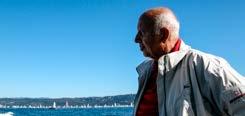 Federico Prandi
Federico Prandi
38 TRIESTE LIFESTYLE IES N°3 — September 2018 Portfolio
Fulvio Molinari
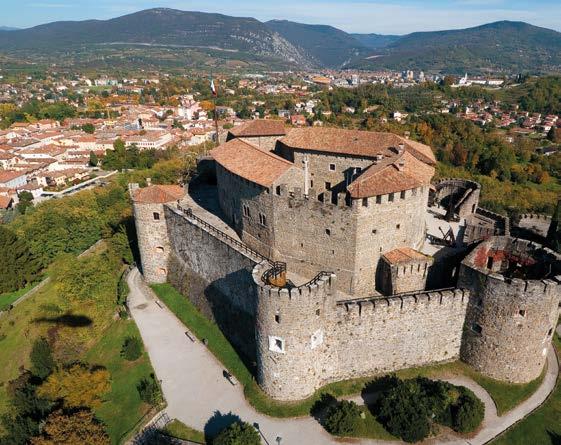

Dalle barche ai transatlantici, dalle ville agli hotel

ARTE ARTIGIANATO E DESIGN
From boats to liners, from villas to hotels
L’elegante showroom Spaziocavana, “tempio del design” a firma Zinelli&Perizzi, accoglie i visitatori all’ingresso di una delle zone più “in” della città: Cavana appunto, in pieno centro storico, tappa d’obbligo di ogni visita o passeggiata in città. Sinonimo di eccellenza italiana nell’arredamento e nella tappezzeria, l’azienda triestina è legata al mondo marinaresco fin dalla nascita, festeggiata con novanta candeline lo scorso anno.
Nel 1927 da Trieste salpa la motonave Saturnia, all’epoca primato mondiale per dimensioni, velocità e lusso: ne cura gli interni il tappezziere e arredatore Giovanni Perizzi. Inizia così la storia familiare che nel 1945 vede i suoi figli, Nino e Tullio, inaugurare il primo negozio Perizzi. Nel 1959 sulla storica sede di via San Nicolò svetta finalmente l’insegna “Zinelli&Perizzi”: il primo, veneziano, è autorità indiscussa nella tappezzeria d’arredo. Le commissioni importanti continuano, dalle signore del mare Raffaello
e Galileo, varate negli anni Sessanta, agli alberghi Ciga Hotels nella decade successiva. Negli anni Ottanta si schiudono le porte delle ville più esclusive, da Cortina alla Costa Smeralda. Negli anni Novanta tornano protagoniste le grandi navi, in sinergia con Fincantieri.
Oggi il settore nautico, trainante e trasversale, è affiancato da quello alberghiero e domestico, tanto che tra il 2009 e il 2015 sorgono tre punti espositivi e di vendita: Spaziocavana; Spaziocaboto, accanto ai laboratori e ai principali assi viari; Spaziopiccolo, nel villaggio turistico di Portopiccolo, a Sistiana.
La sezione Marine Division, specializzata in tappezzeria “dalla nave alla barca”, si rivolge a ogni tipo di armatore. Nella crocieristica spiccano la creazione di aree gioco per ragazzi e le opere di restauro. Tutto è di realizzazione rigorosamente artigianale: dai cuscini personalizzati, per i singoli yacht, alle 23mila tende cucite l’anno scorso per un unico transatlantico.
di /by Lilli Goriup
—
40 TRIESTE LIFESTYLE IES N°3 — September 2018 Città da vivere
Spaziocavana
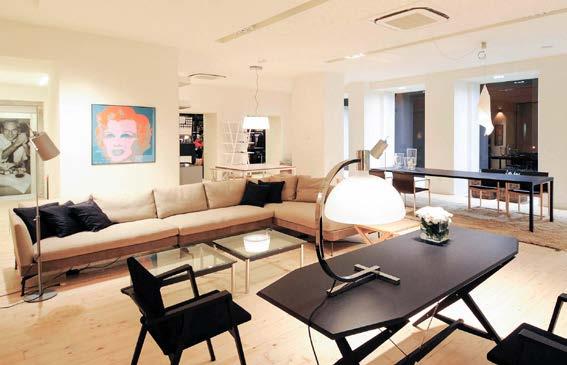
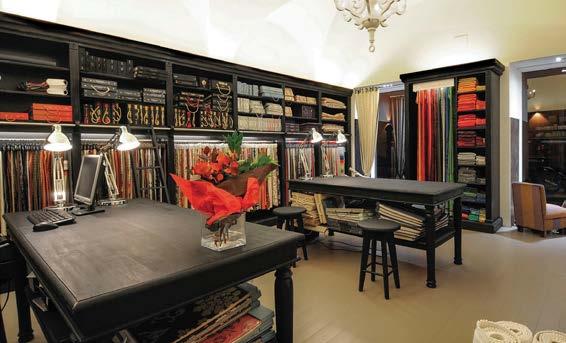
41 TRIESTE LIFESTYLE IES N°3 — September 2018 Live the city
Zinelli&Perizzi’s Spaziocavana, elegant showroom also known as “temple of design”, is located in one of Trieste’s most in vogue areas: Cavana quarter, in the very heart of the old town, a mustsee in any sightseeing tour or during a casual stroll through the city.
This company is synonym of Italian excellence in interior design and decoration and last year it celebrated its 90th anniversary of activity in the seafaring sector.
In 1927 the ocean liner Saturnia raised anchor from Trieste –a watercraft of unprecedented size, traction power, and splendour, carrying the signature of interior designer and decorator Giovanni Perizzi. This was the first step of his family’s enterpreneurial history, which culminated in 1945 with the inauguration of the first Perizzi’s store, created by Giovanni’s sons Nino and Tullio. In 1959, renowned Venetian decorator Zinelli joined the two brothers’ venture, and that very first store in Via San Nicolò could finally display the sign “Zinelli&Perizzi”. Sizeable orders kept flowing in, including not only ocean liners, such as great ladies of the sea Raffaello and Galileo in the Sixties, but also hotels, such as those by Compagnia Italiana Grandi Alberghi (CIGA) in the Seventies. In the following decades the company conquered the market of Italian luxury villas from Cortina to Costa Smeralda (Eighties), while continuing to sign the interior design of increasingly important liners, in cooperation with Italian shipbuilding company Fincantieri – Cantieri Navali Italiani S.p.A. (Nineties).
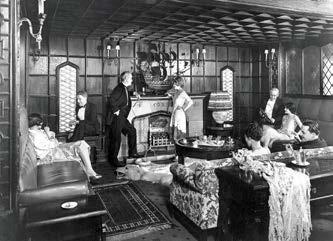
Today the company’s interior design activities range from the nautical sector which is still its top interest and driving force to hotel and home decoration, which led to the inauguration, between
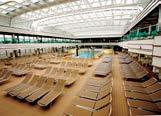

2009 and 2015, of its three showrooms and retail outlets: Spaziocavana; Spaziocaboto, next to the company’s ateliers and main transit routes; and Spaziopiccolo, located in the small tourist village of Portopiccolo, Sistiana.
Zinelli&Perizzi’s Marine Division specialises in interior design for watercrafts of any size and reach. Liner decoration activities are particularly renowned for the creation of children playing areas and renovation projects. The company remains true to its handicraft vocation, from the creation of personalised cushions for yachts to the 23,000 curtains that were sewn last year for one single liner.
ENGLISH
TEXT
—
Gli arredi della Sala da fumo del Saturnia
Oggi il settore nautico dell’azienda, trainante e trasversale, è affiancato da quello alberghiero e domestico
42 TRIESTE LIFESTYLE IES N°3 — September 2018 Città da vivere
Today the company’s interior design activities range from the nautical sector which is still its top interest and driving force to hotel and home decoration


Dalla costiera al centro storico, il fascino della seconda casa a Trieste
On the seafront or in the city centre, the allure of a pied-à-terre in Trieste

C’è il top manager che vuol godersi la meritata quiescenza lontano dalla frenesia milanese, ma c’è anche il diplomatico che ha scoperto la città dopo aver partecipato a una Barcolana ed essersene perdutamente innamorato; al pari dell’uomo d’affari che lavora tra Vienna e Lubiana e ha deciso di metter radici in quello che era l’unico sbocco in Adriatico dell’impero austro-ungarico. Stiamo parlando dei neo residenti a Trieste, che hanno deciso di acquistar casa qui, stregati dalla magia di una città dove il tempo, se non s’è fermato, quanto meno rimane sospeso, lontano dai vorticosi ritmi contemporanei.
Hanno comprato case, molto belle, alcune splendide, e a prezzi vantaggiosi. È la nuova tendenza del mercato immobiliare triestino. “Di Trieste –spiega Antonio De Paolo, leader del settore in città al timone della sua Gallery– piace quella che è la sua dimensione, la sua incredibile vivibilità, la pulizia, l’ordine, la tranquillità, alle quali puoi aggiungere la storia e la cultura che trasudano dalla città…”
Non ultimo, un mercato lontano decine di migliaia di euro dagli standard non solo europei, ma anche di altre città italiane come Roma, Milano o Firenze… “Rispondo con quelli che ormai sono
simpatici aneddoti. Con questi clienti raggiungiamo l’accordo, firmiamo il contratto e quando ci diamo la mano mi dicono: adesso Antonio, puoi dirmi la verità, cosa c’è sotto…? Non credono insomma di poter acquistare uno splendido appartamento nel centro storico di Trieste pagando una cifra che non supera i 3.000 euro a metro quadro. Così come non si capacitano che una villa in costiera, con accesso alla spiaggia, possa venir via con meno di un milione di euro.” È il caso di una dimora a Grignano, con parco, piscina e panorama mozzafiato sul golfo.
D’accordo, questi sono gli acquisti top, ma a tirare è anche e soprattutto l’appartamento più piccolo, il piedaterre da 50 metri quadrati, magari nella zona della città vecchia. Austriaci e tedeschi vanno pazzi per una soluzione del genere. Con meno di 100mila euro hanno una base in città. “Stanno sul mare –aggiunge De Paolo– hanno i vigneti del Collio e le spiagge della Croazia a un tiro di schioppo, in una città che offre, se non tanto, per lo meno il giusto. Trieste negli ultimi anni si è proprio rifatta il look. L’offerta enogastronomica è moltiplicata, al pari di quella culturale, grazie a musei e stagioni teatrali in grado di soddisfare tutti i gusti”. [GM]
—
44 TRIESTE LIFESTYLE IES N°3 — September 2018 Città da vivere
2ND HOME
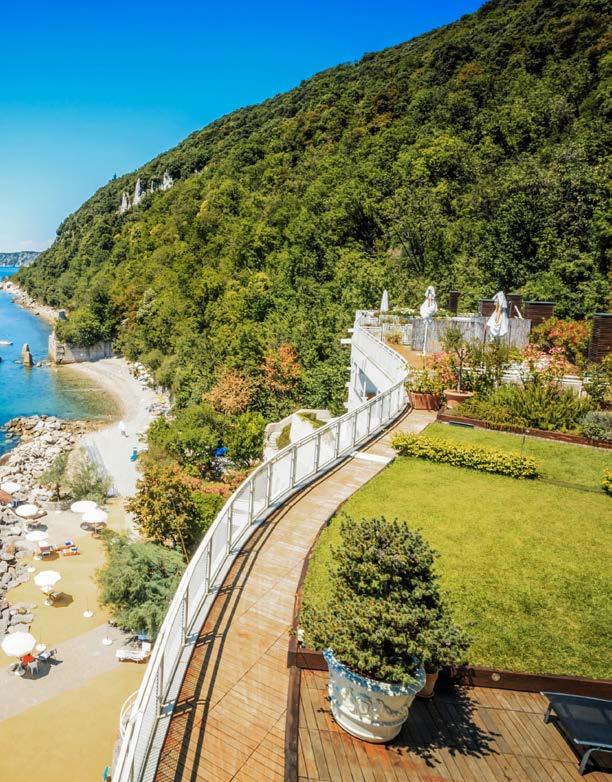
45 TRIESTE LIFESTYLE IES N°3 — September 2018 Discover the city
One is a CEO longing for some well-deserved peace and quiet away from Milan’s frenzy; another is a diplomat who first saw Trieste during the Barcolana regatta and immediately fell in love with it; a third is a businessman who works between Vienna and Ljubljana and decided to settle in what was once the only seaport on the Adriatic Sea in the entire Austro-Hungarian Empire. They are Trieste’s newest residents, who bought a house here, under the spell of a magic city, where time has not stopped, but remains suspended, removed from modern frantic city life.
They bought beautiful, sometimes even splendid houses… at a very reasonable price. This is the new trend of Trieste’s real-estate market. “What people love about Trieste is its size, liveability, cleanliness, order, and peace, all in a city that is wrapped in history and culture…” says leading real-estate agent and owner of the Gallery company Antonio De Paolo.
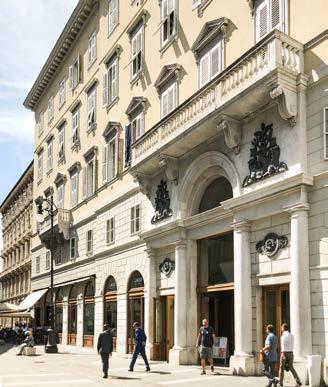
What they also like, of course, is the fact that real-estate prices here are sensitively lower –tens of thousands of Euros lower– compared not only to European standards, but also to other Italian cities, such as Rome, Milan, and Florence. “I will provide an example taken from real-life conversations with these customers. When we close a deal, and after the contract is signed, we shake hands and they say: Antonio, now you can tell

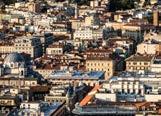
me the truth, is there a catch? In other words, they find it hard to believe that they can actually buy a gorgeous apartment in the city centre for no more than 3,000 Euros per square metre, or a villa on the seafront with access to the sea for less than one million...” It is the case of a villa in Grignano, that has its own park and swimming pool, with a stunning view of the gulf.
Although this is an example taken from the top of the list, smaller apartments are in equally great demand, even studio apartments of 50 square metres, provided they are located in a prime spot, preferably in the old town. Customers from Austria and Germany seem to particularly favour this kind of accommodation. For less than a hundred thousand Euros they can have their own pied-à-terre in Trieste. “They live by the sea, just a stone’s throw away from Croatian beaches and the Collio vineyards, in a city that may not have everything, but has much to offer. Additionally, Trieste’s already rich culinary and cultural heritage is further enhanced, thanks to museums, festivals, and theatre seasons after every possible individual taste” adds De Paolo. [GM]
ENGLISH
TEXT
Ciò che piace di Trieste è la sua dimensione, la sua incredibile vivibilità, la pulizia, l’ordine e la tranquillità —
What people love about Trieste is its size, liveability, cleanliness, order and peace
46 TRIESTE LIFESTYLE IES N°3 — September 2018 Città da vivere
Antonio De Paolo
partner: realizzato da:
sponsor: organizzato da:


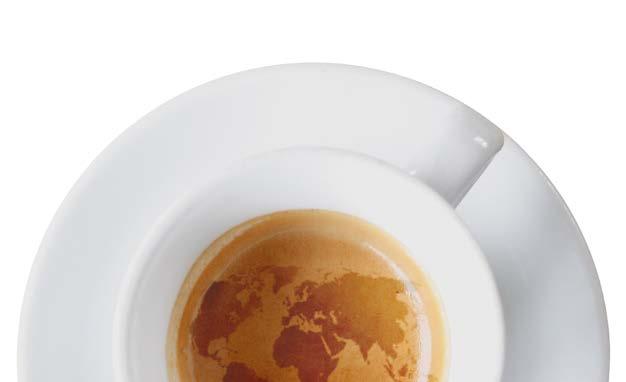
#TEE18
Il Sommaco e la leggenda di Bora — Sumach Shrubs and the legend of Bora
Ilaria Romanzin
Rosse come il sangue. E affascinanti come le leggende e i miti che s’intrecciano negli arbusti di Sommaco che in autunno infiammano il Carso. Le rosse foglie di Sommaco del Carso custodiscono una leggenda, struggente e suggestiva, quella scritta da Edda Vidiz. Vuole che un giorno Vento, girovagando con i suoi figli, giunse su un altipiano verdeggiante a ridosso del mare. Bora, la figlia prediletta, incantata dalla bellezza del paesaggio, si allontanò per scoprirlo fino a incontrare un giovane bellissimo, Tergesteo. I due s’innamorarono immediatamente e vissero sette giorni d’amore infinito. Quando Vento scoprì Bora abbracciata a Tergesteo, si infuriò e uccise il giovane. Straziata dal dolore, Bora cominciò a piangere con tale di /by
IL SOMMACO
disperazione che ogni sua lacrima si trasformava in pietra. Nel tentativo di consolarla, Madre Natura fece nascere dal sangue di Tergesteo un arbusto, il Sommaco, le cui foglie, in autunno, con il loro colore, ricordano proprio quel sangue. Ma Bora non smetteva di piangere e, per evitare che le pietre ricoprissero completamente i prati del Carso, Madre Natura concesse a Bora di rimanere per sempre vicina al corpo di Tergesteo.
Anche questo, però, non placò il dolore di Bora e così Eolo, impietosito, le permise di rivivere ogni anno quei giorni d’amore fra le braccia di Tergesteo. Nettuno, invece, ordinò che le Onde ricoprissero di conchiglie, stelle marine e verdi alghe il corpo dell’eroe affinché diventasse un alto colle sul quale gli uomini dopo molti anni costruirono, con le lacrime di Bora diventate pietre, un Castelliere, primo nucleo abitato della città di Tergeste, dove ancora oggi Bora regna sovrana, per qualche giorno all’anno: “chiara” quando è tra fra le braccia del suo amore e “scura” nell’attesa di incontrarlo.
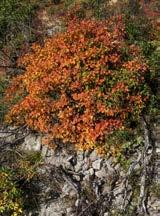 Foto di / Photo by Luigi Vitale
Foto di / Photo by Luigi Vitale
48 TRIESTE LIFESTYLE IES N°3 — September 2018 Città da vivere
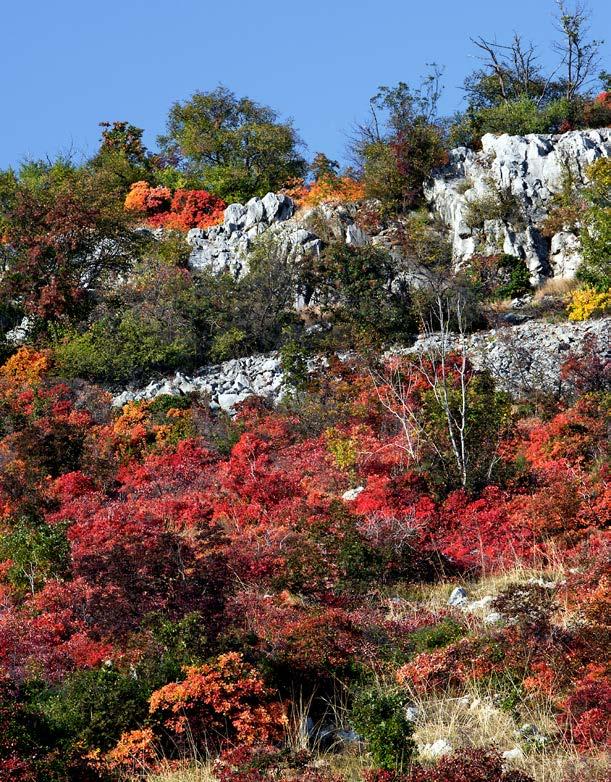
49 TRIESTE LIFESTYLE IES N°3 — September 2018 Live the city
ENGLISH TEXT
As red as blood. And as fascinating as the legends and myths that are wrapped around its shrubs, inflaming the Karst Plateau in Autumn.

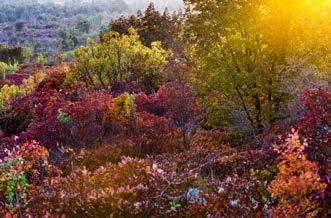

A casket of red sumach leaves surrounds a spell-binding, heart-breaking legend written by Edda Vidiz. It tells the story of Wind, who was roaming the sky with his children, when one day he reached a verdant plateau overlooking the sea. Bora, his most beloved daughter, enchanted by the beauty of such scenery, moved closer and began to explore, until she met an attractive young man, Tergesteo. They fell in love at first sight, and spent the following seven days enwrapped in their endless love.
Finding Bora in the arms of Tergesteo, Wind went into a fury and, in his blind rage, killed the young man. Tortured by grief, Bora began to cry, and her tears were so desperate that they turned into stone. To comfort her, Mother Nature grew a shrub from Tergesteo’s blood – a sumach plant, whose leaves turn red in Autumn, in memory of the blood that was shed. However, Bora kept crying, so Mother Nature, to prevent the entire
plateau from turning into stone, gave Bora permission to spend eternity where Tergesteo’s body lied.
Bora remained inconsolable, and her grief moved Aeolus to pity: he decided that every year Bora would be allowed to relive those seven days of love in the arms of Tergesteo. Neptune commanded the sea to raise his waves and cover the hero’s body with shells, starfish, and green seaweed, until a massive hill rose in its place. Many years later, on that very hill, people built a small fortress from the stones that were once Bora’s tears. The fortress became the first settlement of the city of Tergeste, where Bora dwells to this day, reigning supreme for a few days a year: her rule is “fair” in the arms of her love, and “dark” in those months when she waits to rejoin him.
—
Madre Natura fece nascere dal sangue di Tergesteo un arbusto, il Sommaco, le cui foglie, in autunno, con il loro colore, ricordano proprio quel sangue
50 TRIESTE LIFESTYLE IES N°3 — September 2018 Città da vivere
Mother Nature grew a shrub from Tergesteo’s blood – a sumach plant, whose leaves turn red in Autumn, in memory of the blood that was shed
Rosso... come il Sommaco
Arancione, giallo oro, porpora ma soprattutto rosso: sono i colori che, ai primi freddi d’autunno, infuocano le bianche pietre calcaree del Carso. Il merito è del Sommaco, (Cotinus coggygria, come lo ha chiamato Plinio), un arbusto che si accontenta di affondare le radici in pochi centimetri di terra, tra le fessure della roccia. Il fogliame di colore verde chiaro in estate, con il freddo dell’autunno diventa rosso fuoco, grazie al tannino e alla trementina. Un tempo le foglie erano utilizzate per la concia delle pelli, per la tintura delle stoffe, finanche per un decotto; il legno veniva usato per ottenere il giallo, lo stesso colore dei suoi piccoli fiorellini primaverili, simili a sbuffi di fumo che tanto da valergli il nome di ‘albero della nebbia’. Lo spettacolo del Sommaco rosso inonda gran parte dell’altipiano Carsico, ma per ammirarlo in tutto il suo splendore basta raggiungere i sentieri nella zona di Monrupino, il sentiero di Rilke a Duino Aurisina o la strada Napoleonica, a Opicina. [IL]

Red as… Sumach
Orange, golden, purple, and, most importantly, red: this is the Autumn palette lighting the white limestone of the Karst Plateau. They are the colours of Sumach (classified Cotinus coggygria by Pliny the Elder), a shrub with roots that can survive in just a few inches of soil beneath the cracks in the rocks. Sumach leaves are light green in summer, but turn bright red in the colder season due to its tannin and turpentine components. They were once used in the manufacture of leather, and as dying substance for fabrics, while their medicinal use was quite widespread in the Middle Ages. Sumach wood yielded yellow dye, a hue similar to that of its flowers. In blooming time, sumach flowers appear as tiny puffs of smoke, which is why this plant is also known as ‘fog tree’. While the cloak of red Sumach covers the entire Karst Plateau, its colours can be admired even closer to the city of Trieste: in Monrupino area; on the Sentiero Rilke trail towards Duino Aurisina; and on the Strada Napoleonica in Opicina. [IL]
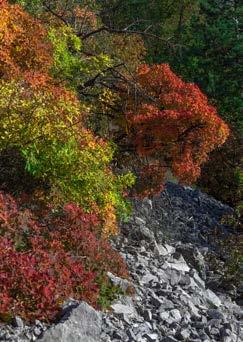
51 TRIESTE LIFESTYLE IES N°3 — September 2018 Live the city

52 TRIESTE LIFESTYLE IES N°3 — September 2018 Città da vivere
Fra il rosso del Carso e l’azzurro del mare
—
Between the red
IL SENTIERO RILKE
Karst and the blue sea
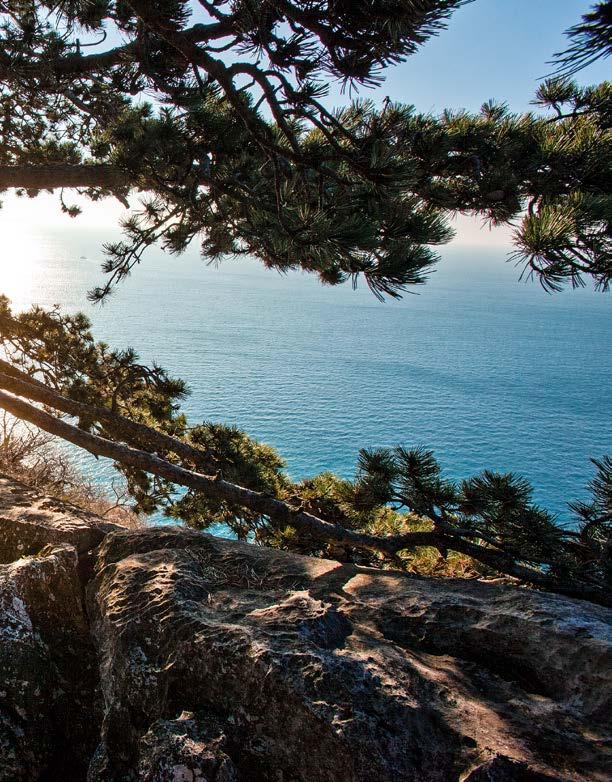
53 TRIESTE LIFESTYLE IES N°3 — September 2018 Live the city
Se pur gridassi, chi m’udrebbe dalle gerarchie degli angeli? E se uno mi stringesse d’improvviso al cuore, soccomberei per la sua troppo forte presenza [1]
Who, if I cried out, would hear
me among the
Angelic
Orders? And even if one were to suddenly take me to its heart, I would vanish into its stronger existence [1]
on possono essere stati che gli angeli a suggerire al poeta Rainer Maria Rilke i versi con i quali apre la prima delle sue dieci celebri elegie scritte durante il suo soggiorno a Duino.
Rilke, uno dei più significativi poeti della Mitteleuropa di inizio ’900, nella sua costante ricerca dell’‘Altrove’, fece tappa al castello di Duino ospite dell’affascinante, ricca e colta principessa Maria Thurn und Taxis.
Il sentiero che prende il suo nome, collegando Sistiana a Duino, è uno di quei posti indimenticabili da vivere conoscendone la storia, per meglio apprezzarne la ruvida bellezza. Siamo sul Carso triestino, dove tutto cresce “nonostante” e dove una vita, per esistere, è costretta ad affermare la sua caparbietà.
E il poeta che celebra e soffre la caducità delle cose, deve per forza essere stato sedotto e ispirato dall’invadente e sfacciato sommaco, che nei mesi autunnali colora e ricopre ogni spazio di toni infuocati, dai contrasti tra bianchissime falesie di roccia che sembrano sculture di pietra erose dal tempo e dalla fatica di resistere alla bora e il mare blu che nelle giornate limpide regala panorami da togliere il respiro. Dal soffio del vento di gennaio tra le fronde dei lecci e i profumi dei pini neri che se ne fregano del gelo e regalano mille sfumature alla costa che si staglia a strapiombo sul mare. Insomma, è qui che si respira la dimensione lirica del poeta che si proponeva di vedere il profondo delle cose.
Come un regalo, alla fine del
sentiero, è obbligatorio percorrere le stanze del castello di Duino, che si erge su uno scoglio di roccia calcarea a continuazione della ripida falesia che da Miramare arriva alla Bocca del Timavo. Datato 1363, non è un maniero cupo e maestoso, rivela piuttosto la pacatezza dei tempi di pace, quando si coltivavano i diletti.

Nelle vicinanze, facilmente raggiungibile in auto, si trova anche la chiesa di San Giovanni in Tuba, costruita nel quinto secolo sulle rovine del preesistente tempio romano.
Altro non serve dire, il sentiero va percorso, perché “Spesso le esperienze che viviamo non si possono esprimere a parole e quindi chi pretende di raccontarle incorre fatalmente in errori”[2]
1 Rainer Maria Rilke, Elegie duinesi. Wer, wenn ich schriee, hörte mich denn aus der Engel Ordnungen? und gesetzt selbst, es nähme einer mich plötzlich ans Herz: ich verginge von seinem stärkeren Dasein.
2. Rainer Maria Rilke, Le storie del buon dio. Die Dinge, die wir erleben, lassen sich oft nicht ausdrücken, und wer sie dennoch erzählt, muß notwendig Fehler begehen.
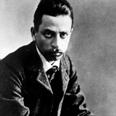
N
—
di /by
Isabella Franco
54 TRIESTE LIFESTYLE IES N°3 — September 2018 Città da vivere
Rainer Maria Rilke
Only an angel could have inspired poet Rainer Maria Rilke to write the verses that open the first of his ten, widely celebrated elegies, composed during his stay in Duino.
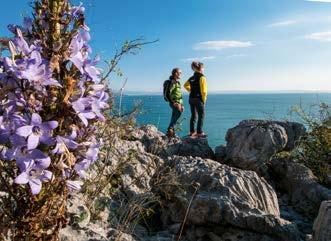
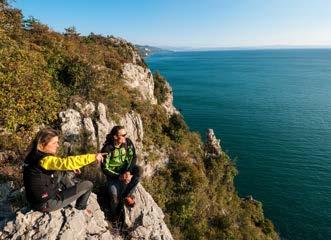
One of the most influential poets in Mitteleuropa [Middle Europe] at the beginning of the 20th century, Rilke travelled extensively in his incessant pursue of the Elsewhere. His wandering brought him to Duino Castle, where he met his affluent and cultured host, charming Princess Maria Theresia von Thurn und Taxis.
Sentiero Rilke , the trail dedicated to Rilke’s memory that connects the municipalities of Sistiana and Duino, is a unique itinerary, whose bristly beauty is further enhanced by the events that led to its creation. Here, deep within the Karst Plateau just outside Trieste, where life grows “despite”, obstinate determination is essential to survive.
A poet like Rilke, who lived celebrating and suffering the transient nature of all things, must have been captivated and inspired by the local variety of sumach, a brazenly invasive deciduous shrub covering every inch of ground in the Autumn months, igniting the landscape with its fiery colours. The deep red of sumach bushes shines even brighter in sharp contrast with the pure white of
ENGLISH TEXT
—
Siamo sul Carso triestino, dove tutto cresce “nonostante” e dove una vita, per esistere, è costretta ad affermare la sua caparbietà
55 TRIESTE LIFESTYLE IES N°3 — September 2018 Live the city
Here, deep within the Karst Plateau just outside Trieste, where life grows “despite”, obstinate determination is essential to survive
the cliffs, standing tall like stone sculptures that have survived the erosion of time and wind. On a clear day, their fine outline emerging from the bluest of seas provides for a breathtaking view.
Come arrivare
How to get there
Monfalcone
Then comes Winter, when gelid gusts of wind shake the fronds of holly oaks and carry the fragrant scent of the black pines dotting the coast, impervious to the cold, in a whirlwind of countless hues that chase one another on the cliffs overhanging the sea. Such was the emotional dimension within which the poet could peer into the depth of all things.
At the end of the trail wayfarers are rewarded with a visit to the splendid chambers of Duino Castle, an ancient fortification located on a limestone cliff that runs along the coast from Miramare to the Mouth of the Timav river. The Castle was built in 1363 and its gentle outline, unlike the imposing structure of more traditional strongholds of the Middle Ages, testifies to the quiet delights of a time of peace.
Not far from here, a road open to light traffic leads to San Giovanni in Tuba, a fifth-century church built on the ruins of an ancient Roman temple.
There are no more words to describe it: the rest of the Sentiero must be discovered on foot, because “The things we experience often cannot be expressed, and any one who insists on telling them nevertheless, is bound to make mistakes” [2].
Il punto di partenza del sentiero è dietro l’Ufficio turistico di Sistiana di PromoTurismoFVG, lungo la strada statale 14. Da Trieste si arriva anche in bus con la linea 44, in partenza da piazza Oberdan. Tempo di percorrenza: 1 ora circa. Dislivello: 30 metri. Cartelli e bacheche illustrano il sentiero che è facile, ma bisogna fare attenzione a non esporsi sul bordo della falesia.
The starting point of the trail is located behind the PromoTurismoFVG’s Tourist Office in Sistiana, on Strada Statale 14 (i.e. State highway). By Bus: board Bus no. 44 in Piazza Oberdan, estimated travel time: 1 hour. Rise: 30 metres. Difficulty level: low. There are road signs and notice boards indicating the trail. Caution: avoid leaning out from the edge of the cliff.
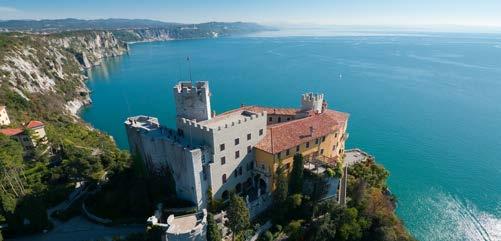 Trieste
Trieste
56 TRIESTE LIFESTYLE IES N°3 — September 2018 Città da vivere
Monfalcone
i
Baia di Sistiana
Duino
Castello Vecchio
Sistiana
Ufficio Turistico SS14 A4
SS14
Castello di Duino
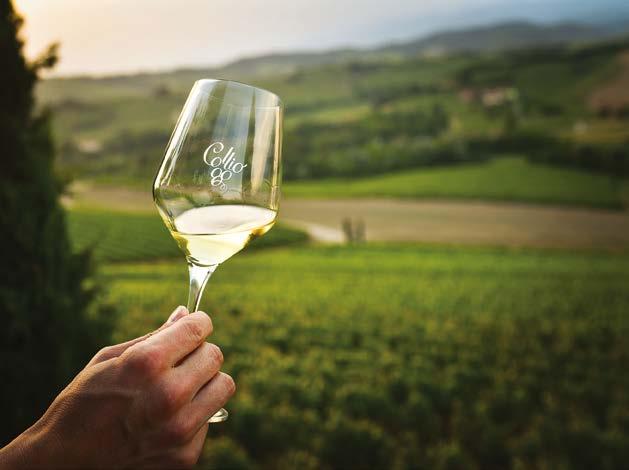

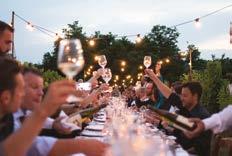
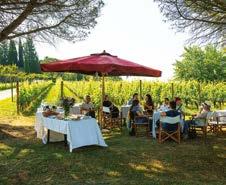
consorzio_collio info@collio.it Consorzio Collio blogcollio
a prima cosa: non ci sono fave nelle fave triestine. Può cominciare così il breve viaggio nella storia di questo dolcetto davvero unicamente triestino, ma è proprio questa la verità: il nome si perde nell’alba dei tempi e ha origine dalla pianta leguminosa (simile a un pisello ma più grande, nella forma più vicina a un fagiolo) che Romani e Greci, ma non solo, solevano associare al culto dei morti. La credenza le voleva custodi delle anime dei defunti, forse perché il fiore bianco e nero ricorda il “Tau” greco –iniziale della parola “Tanatos”, morte– e le sue radici lunghissime accedono ai “mondi sotterranei dell’oltretomba”.
E infatti le nostre nonne erano solite tirar fuori le favette –rigorosamente di tre colori, il bianco a simboleggiare la nascita, il rosa la vita ed il marrone la morte– soltanto a ridosso del 2 Novembre. Momento in cui le pasticcerie della città si riempiono dei tradizionali sacchettini trasparenti ricolmi di queste delizie a base di mandorla, dalla forma simile a una ciliegia.
Stando agli archivi dell’Antica
Pasticceria Pirona (oggi chiusa, si spera temporaneamente), le fave triestine risalgono all’inaugurazione del Castello di Miramare (1861 circa). La ricetta tradizionale voleva le mandorle macinate e lasciate ad asciugare per almeno un paio di giorni vicino al focolare, prima di venire unite al resto degli ingredienti.
Un consiglio quando le acquistate: guardate attentamente come si presentano le favette e tastate il sacchettino per verificare la consistenza. La fava deve presentarsi piena di screpolature in superficie, friabile ma non dura. Se è troppo secca e liscia, non state spendendo al meglio i vostri soldi...
Let’s get this straight: there are no broad beans in Fave Triestine [Triestine broad beans]. So begins our brief journey into the history of this truly Triestine delicacy, the name of which dates back to the beginning of time and the plant that the Greeks and the Romans, among others, used to associate with the cult of death. The belief was that the broad bean held the spirit of the dead, maybe because the black and white flower of the plant is reminiscent of the Greek “Tau” –the beginning of the word “Tanatos” or death– and its long roots stretch down to “underground worlds beyond the grave”.
In fact our grandparents only used to take the ‘favette’ [little beans] out on the 2nd of November, the day after All Saint’s Day when traditionally people remember their dead. The small marzipan sweets come in three colours: white symbolising birth, pink for life and brown for death. During that period, cake shops around the city fill their shelves with little transparent bags full of these tasty morsels made from almond paste and with a similar shape to a cherry.

Looking back at the archives of the Antica Pasticceria Pirona (a famous Triestine cake shop, which sadly is currently closed), the Triestine Fave (pronounced ‘Fa-Ve’) can be traced back to the opening of Miramare Castle in about 1861. The traditional recipe used almonds which were ground and left to dry for at least a couple of days in front of the fire, before being mixed with all the other ingredients.
A piece of advice when you buy them: have a good look at the fave and feel them through the bag to check their consistency. The ‘bean’ should be rough on the surface, crumbly but not hard. If it is too smooth and dry, you should spend your money elsewhere…
FAVE TRIESTINE
L
ENGLISH
TEXT
Un dolcetto dalle radici antiche — Sweet treats with an ancient history di /by
58 TRIESTE LIFESTYLE IES N°3 — September 2018 Città da gustare
Alice Fabi
A casa preparale così
Ingredienti
250 g di mandorle pelate
370 g di zucchero
1 uovo intero
1 albume montato a neve
1 cucchiaio di alcool per alimenti
3 cucchiai di cacao

1 goccia di essenza di rosa
grappa o maraschino q.b. (facoltativo, per le fave bianche)
Preparazione
Macinare finemente le mandorle. Unire lo zucchero, le uova e l’alcool. Impastare velocemente e dividere in tre parti. La consistenza deve permette di formare dei lunghi rotoli da cui ottenere le palline. Al primo impasto aggiungete una goccia di grappa e/o maraschino, al secondo una goccia di essenza di rosa, al terzo il cacao. Formate delle palline, tutte della stessa grandezza, adagiatele su una teglia ricoperta di carta da forno e infornate a 160 gradi per 5 minuti circa.
How to make them at home
Ingredients
250 g blanched almonds
370 g sugar
one egg
one egg white whisked to soft peaks
one spoon of alcohol
3 spoons of cocoa powder
a drop of natural rose essence grappa or maraschino to taste (optional, for the white fave)
Method
Finely grind the almonds. Add the sugar, eggs and alcohol. Mix well and divide into three parts. You should have a consistency that enables you to make three long rolls to make little balls from. To the first roll of dough, work in a drop of grappa or maraschino. To the second, the rose essence and to the third the cocoa powder. Make small, cherry-sized balls with the dough and place them on a lined baking tray. Bake in the oven at 160 degrees for about 5 minutes.
59 TRIESTE LIFESTYLE IES N°3 — September 2018 Taste the city
Un percorso di Pace nella città dei sette cimiteri —
An itinerary of Peace through the city’s seven graveyards
MEMORIA
di /by Nicolò Giraldi
Un lungo portico neoclassico della prima metà del XIX secolo, scandito da 61 campate, con decine di opere d’arte, tombe di famiglia e loculi ipogei: è nel monumentale cimitero cattolico di Sant’Anna la prima tappa di un percorso di Pace che racconta come a Trieste, nel corso dei secoli, lo spirito di convivenza e integrazione, cominciato nella vita, sia proseguito oltre la morte.
Bisogna affinare l’udito, sotto il suono di un megafono che amplifica la suggestione, per ascoltare i valori che i cimiteri di Trieste vivono e trasmettono. Cimiteri di sette religioni diverse che, fra muri, vialetti, arcate, marmi, statue, obelischi, in un’incredibile varietà di materiali e stili, dal gotico al
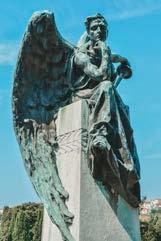
bizantino, dal neoclassico al risorgimentale, hanno fatto di Trieste una città aperta e unica.
In via della Pace, che molti chiamano la Via della Memoria, nel quartiere di Valmaura, si trovano i cimiteri ortodossi (quello greco e quello serbo), il camposanto ebraico, quello ex militare, l’evangelico e l’anglicano, fino a quello musulmano. Una distesa di lapidi dai cognomi stranieri, che con il tempo hanno ridipinto la città fino a farla diventare un crogiuolo di nazionalità e di lingue, di tradizioni che hanno contaminato l’ambiente urbano.
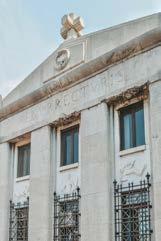
Sono molte le storie legate ai cimiteri. Narra una leggenda che nel cimitero islamico si potessero trovare, fino a non molto tempo fa, i bottoni delle divise dei soldati bosniaci di stanza a Trieste durante la Grande Guerra e qui sepolti. A Trieste venne ucciso Johann Winckelmann, precursore dell’archeologia moderna, teorico e padre del Neoclassicismo. Venne gettato in una fossa comune e il corpo andò perduto.
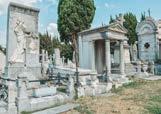
60 TRIESTE LIFESTYLE IES N°3 — September 2018 Città da vivere
Oggi, sul colle di San Giusto si trova il cenotafio a lui dedicato. Nel campo santo ebraico sopravvive la tomba di famiglia dei Morpurgo, e una di esse, è la lapide che ricorda il fondatore delle Assicurazioni Generali, Giuseppe Lazzaro Morpurgo. Poi a un tratto ci si imbatte in uno Svevo: non è il famoso Italo, bensì suo fratello Elio. Poco distante, nel cimitero serbo si trova la lapide dell’ultimo discendente della dinastia degli Obrenović che regnò in Serbia nell’Ottocento. E lì vicino, ci si può ritrovare di fronte a lapidi di giovani inglesi, che morirono a Trieste durante il periodo del Governo Militare Alleato, tra il 1945 e il 1954. In un percorso della Memoria che si immerge a fondo, tra le pieghe di una storia lontana, che diventa percorso di Pace, a un passo dall’attualità.
ENGLISH TEXT
An early-19th century colonnade, 61 aisles, dozens of artworks, family graves, and artificial caves used as burial recesses: Sant’Anna majestic catholic graveyard is the first stage of an itinerary of Peace, telling the story of how Trieste’s spirit of coexistence and integration has lived throughout centuries, both in life and death.
Visitors only need lending an ear to the loudspeaker that amplifies history’s testament, telling the story of the living values that dwell within Trieste’s cemeteries.
Graves and tombs of seven different religions dot the self-same ground, surrounded by walls, walkways, archways, statues, and obelisks – a melting pot of materials and styles, ranging from Gothic to Byzantine, from Neoclassicism to Renaissance, defining the unique and open nature of the city of Trieste.
Via della Pace [Peace road], also known as Via della Memoria [Memory lane], in Valmaura district, hosts two Orthodox cemeteries (Serbian and Greek, respectively), one Jewish cemetery, a former military graveyard, and the city Evangelical, Anglican, and Muslim cemeteries. A stretch of land covered in foreign family names, whose nationalities, languages, and traditions make up the city’s cultural mosaic.
Cemeteries are repositories of collective memory. It is said that, not long ago, the ground of the Muslim cemetery was full of buttons of military uniforms belonging to Bosnian soldiers, who served –and died– in Trieste during World War II. Trieste is where the
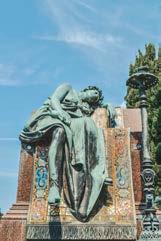
execution of Johann Winckelmann, German art historian, archaeologist, and father of Neoclassicism, took place. His body was thrown into a mass grave, where it was lost. Today, a cenotaph on San Giusto hill pays tribute to his memory. The Jewish cemetery hosts the Morpurgo family’s grave, including a tombstone dedicated to Giuseppe Lazzaro Morpurgo, founder of insurance company Assicurazioni Generali. You may also spot a further famous name: Svevo. But this is not Italo’s tomb, it is his brother’s, Elio.
Not far from here, the Serbian cemetery hosts the grave of the last descendant of Obrenović’s family, who reigned over Serbia during the 19th century. His grave is surrounded by tombstones carrying the names of British soldiers who died in Trieste under Allied Military Government between 1945 and 1954. This Memory lane winds through history’s folds, leading through an itinerary of Peace, not far from our day and age.
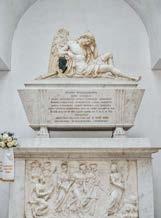
Il cenotafio di Winckelmann
A Trieste, nel corso dei secoli, lo spirito di convivenza e integrazione, cominciato nella vita, è proseguito oltre la morte
–
61 TRIESTE LIFESTYLE IES N°3 — September 2018 Live the city
Trieste’s spirit of coexistence and integration has lived throughout centuries, both in life and death
Il Patrono fra fede e leggenda. La festa il 3 novembre —
A Patron Saint between faith and legend. Celebrations on 3rd November
SAN GIUSTO
Giusto iera uno solo e anche quel i lo ga copà”. Se dovessimo pensare di mettere il naso nelle faccende che riguardano la vita del patrono di Trieste, San Giusto, allora sarebbe meglio partire dal legame dei triestini con il Santo, cristallizzato in questo motto popolare: “Giusto era uno solo anche quello lo hanno ucciso”.
Secondo la tradizione, infatti, San Giusto venne arrestato durante le persecuzioni di Diocleziano, il 2 novembre del 303 d.C e non rinnegò la sua fede cristiana neanche davanti al governatore di Trieste, Mannacio. Venne così fatto salire su un’imbarcazione, gli vennero legate le mani e i piedi e fu fatto annegare con alcuni pesi di piombo che lo portarono sul fondo del mare.

Secondo la leggenda, quella stessa notte Giusto si presentò in sogno al sacerdote Sebastiano invitandolo a recuperare il suo corpo per dargli una degna sepoltura. La mattina successiva il corpo fu trovato a riva, senza corde e senza piombi. Fu sepolto nel luogo del ritrovamento e nel X secolo i resti furono portati in una basilica cristiana costruita per lui sul colle che oggi porta il suo nome. [NG]
ENGLISH TEXT
“Giusto iera uno solo e anche quel i lo ga copà” [Trieste dialect expression, lit. “There was only one Giusto (i.e. Just man) and he was killed even so”]. In order to learn about Trieste’s Patron Saint, one’s research should necessarily begin from the bond between
Saint Justus and the Triestini [citizens of Trieste], a bond that is effectively summarised in the above-mentioned local saying.
According to the traditional account of his passio, Saint Justus was arrested on 2nd November 303 a.D., at the onset of the general persecution of Christians by Diocletian. Since he refused to renounce his Christian faith before the governor of Trieste, Mannacius, he was sentenced to death by drowning: he was thrown from a small boat into the Gulf of Trieste, his hands and feet tied, his body dragged down by lead weights.
Legend has it that, on the very night of his death, Justus came to the presbyter Sebastian in a dream, asking him to retrieve his body and give it a decent burial. The following morning Justus’ body was found: it had been washed ashore, and both ropes and weights had vanished. Justus was buried not far from the shore where he had been found. It was only in the 10th century that his body was translated to a Christian chapel (today Cathedral of Saint Justus) on top of the hill named after him. [NG]
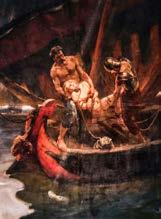
62 TRIESTE LIFESTYLE IES N°3 — September 2018 Città da scoprire
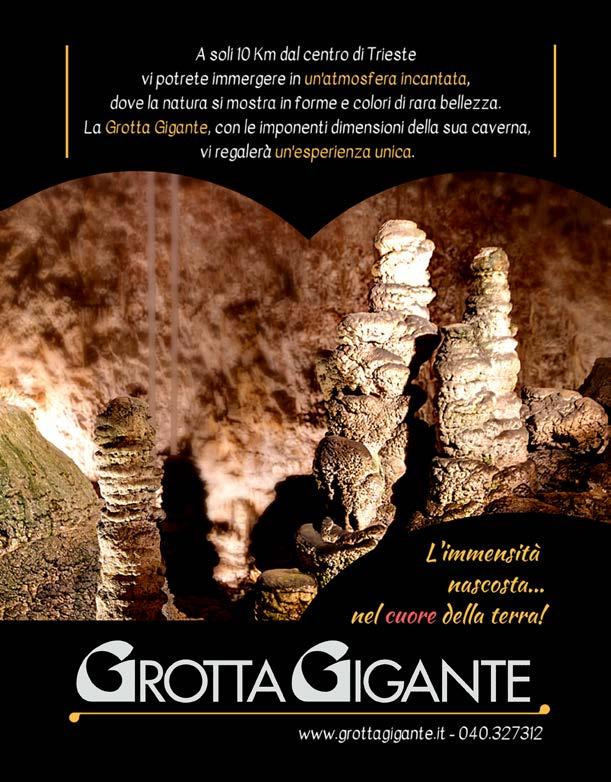
COLLIO
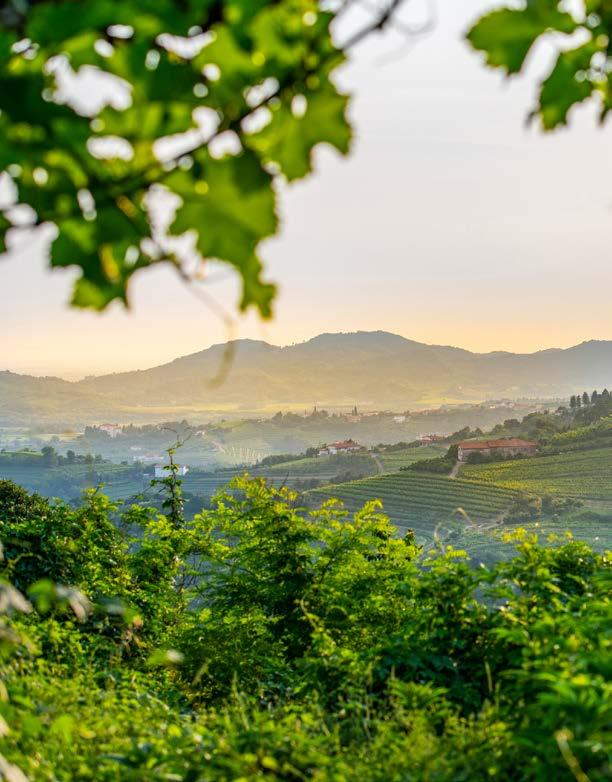
Benedetto da Dio e dagli uomini
— Blessed by God and men
64 TRIESTE
IES N°3 — September 2018 Città da vivere
LIFESTYLE
FUORI PORTA
di /by Walter Filiputti
La bellezza nel raccontare il vino sta nella sua continua diversità e nel fatto che “la partita” –si legge vendemmia– “si gioca” una sola volta l’anno. Ed è sempre una sorta di finale. Non basta. Abbiamo un “Socio di maggioranza” che sta lassù e al quale nulla possiamo chiedere. Decide, senza consultarci. Da cui la necessità di possedere un profondo senso di umiltà verso Madre natura che, come sa dare, anche prende.
Se poi parliamo del Collio, queste tensioni-emozioni-sensazioni e suggestioni si fanno ancora maggiori. Perché? In quanto gode di una posizione collinare magica, come sospeso in un mondo tutto suo tra il mare, a pochi chilometri e le montagne che lo proteggono dal Nord e aperto a Est ai venti di Bora. Anche qui –o meglio: fin qui– nulla l’uomo ha fatto, perché il Collio lo ha avuto in regalo. Molto ha fatto successivamente, lucidando quel regalo fino a trasformarlo in gioiello di prima grandezza, anche se è stato un lavoro impegnativo e lungo secoli, che portò a dettare lo stile moderno del Rinascimento del vino bianco italiano, sbocciato tra la fine degli anni Sessanta e i primi Settanta del
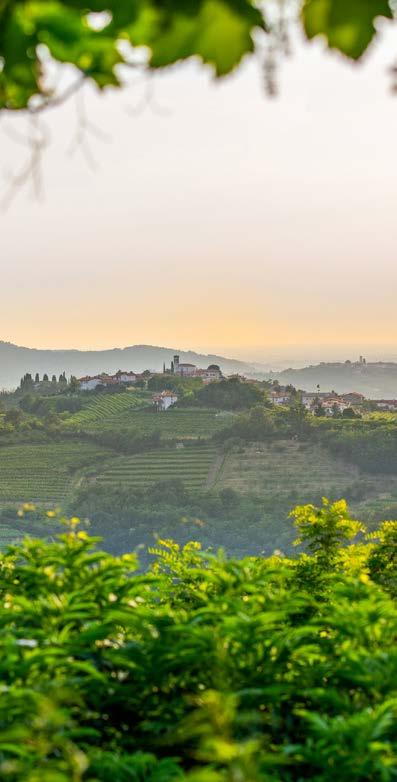
65 TRIESTE LIFESTYLE IES N°3 — September 2018 Live the city
Novecento, condividendone la primogenitura con la Toscana, quest’ultima per i vini rossi.
Essì: quella “partita dell’anno” è il vignaiolo che se la deve “giocare” e per vincerla non bastano i muscoli (il lavoro), ma serve anche la capacità di assemblare una inedita cuvée tra cultura, sensibilità, conoscenza, saggezza contadina, tradizione e innovazione, i cui “schemi di gioco” vanno reinventati vendemmia dopo vendemmia.
Un grande vino non nasce mai per caso: è il frutto della straordinaria fusione tra idee e realtà, tra sogni, intuizioni, scelte concrete e scenari che mutano.
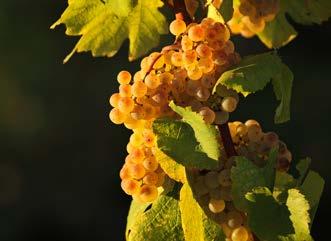
Non è quindi un caso se il Collio sia stata la prima Doc a essere stata assegnata al Friuli Venezia Giulia (era il 1968). O che il suo Consorzio –fondato nel 1964 con una visione di lungo periodo– sia stato uno dei primissimi d’Italia.
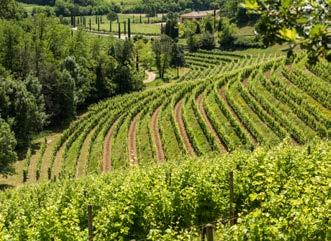
Sono gli uomini che danno lo stile, la personalità al loro vino, per poi innalzarlo a simbolo, a bandiera del territorio di appartenenza.
Uomini come, ad esempio, il Conte Douglas Attems, primo presidente del Consorzio, cui succedette Marco Felluga, che ha contagiato i colleghi produttori con il suo entusiasmo e la sua visione di lungo termine.
Parafrasando Gino Veronelli, possiamo ben dire che il Collio è terra benedetta da Dio e dagli uomini.
–
Un grande vino non nasce mai per caso: è il frutto della straordinaria fusione tra intuizioni e realtà
66 TRIESTE LIFESTYLE IES N°3 — September 2018 Città da vivere
Great wines are not born by accident: they are the result of an extraordinary blend of imagination and reality
When it comes to wine, its beauty lies in its endless variety, as well as the fact that each “lot” read harvest is a “once-in-ayear prize”. And every year, when said prize is awarded, it feels like a grand finale. But there is more to it. Our “majority shareholder” high above does not take requests. His decisions are final. Hence the need for a most profound humbleness before Mother Nature, who can give, but can also take.
Furthermore, when speaking of Collio wine, the name alone is able to quicken even greater emotions-feelings-tensions. Why is that? Because Collio hills are pure magic, a world suspended between mountains and sea the former protecting it to the North, the latter just a few miles to the South, with the Bora wind sweeping in from the East.
No effort was required on the part of mankind: Collio, as it is, was simply gifted to us. Our job was to take care of such gift, polishing and glossing it till it shone like a precious jewel. It was a daunting, century-long task, which eventually led to the so-called modern Italian white wine’s Renaissance, in the Sixties and early Seventies of the 20th century, when Tuscan red wines were becoming a trademark of excellence.
Every year vintners pursue the goal of that “once-in-a-year prize”, an endeavour that requires not only a great physical effort, but also the ability of assembling a unique cuvée, one that brings together culture, sensitivity, knowledge, ancient rural wisdom, tradition, and innovation. And every year, the prize is won only by those who were able to devise and perfect their “game” strategy most efficiently, harvest after harvest.
Great wines are not born by accident: they are the result of an extraordinary blend of imagination and reality, dream and intuition, initiative and flexibility.
It should come as no surprise, therefore, that Collio was the very first wine
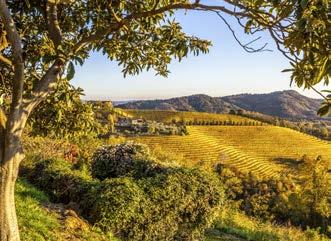

production area in the Friuli Venezia Giulia region to be awarded the DOC label [controlled designation of origin] in 1968. Nor should the fact that the Consorzio Collio group, established in 1964 thanks to a long-term vision, is one of the oldest consortia in Italy.
Ultimately, it is people who confer style and character to their wine, before elevating it to become a symbol and flagship of its territory of origin.
People like Count Douglas Attems, for example, first president of Consorzio Collio, later succeeded by Marco Felluga, who was able to inspire his fellow vintners with his passion and vision.
Echoing Gino Veronelli’s words, Collio may indeed be defined as a land blessed by God and men.
ENGLISH TEXT
67 TRIESTE LIFESTYLE IES N°3 — September 2018 Live the city
IN MOSTRA
Tesori del passato
Treasures of the past
ANTIQUA
di /by Matteo Contessa
Dagli oggetti d’arredo ai gioielli d’epoca, dai vetri alle porcellane, dalle stampe ai mobili rari: è forte la tradizione che lega Trieste al mondo dell’antiquariato e che ogni anno vive il suo momento più importante con “Antiqua”, la mostra d’antiquariato che nel corso delle sue 35 edizioni si è progressivamente trasformata da luogo di incontro fra collezionisti locali in punto di riferimento per un bacino sempre più ampio che oggi abbraccia l’intera Europa centrale.
L’edizione 2018 di quella che ormai è una delle mostre più longeve d’Italia coinvolge una cinquantina di espositori (a fine novembre nel Salone degli Incanti), con oggetti il cui valore storico e culturale è di gran lunga superiore alla pur ingente stima commerciale posto.
“Trieste fa parte di un bacino d’utenza mitteleuropeo per tutto ciò che va dal Biedermeier all’Art Decò”, spiega Roberto Borghesi, presidente dell’Associazione Antiquari del Friuli Venezia Giulia. Ovvio, perché stiamo parlando di un periodo che si estende più o meno dal 1830 al 1920, nel quale Trieste visse come porto dell’Impero austroungarico il suo massimo splendore economico, artistico e intellettuale. E nel quale una parte cospicua delle notevoli ricchezze arrivate in città con i commerci venne spesa per arredare, decorare, impreziosire le abitazioni secondo i canoni dell’arte e dell’architettura d’interni in voga all’epoca. “Ancora oggi, sparsi in centinaia di abitazioni del centro cittadino, sono custoditi arredi, accessori e opere d’arte –rivela sempre Borghesi–spesso pezzi unici o realizzati all’epoca su misura. Chi ha avuto l’accortezza di conservarli, oggi si trova in casa veri e propri tesori”.
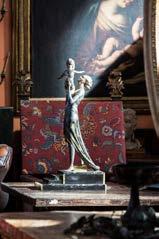
ENGLISH TEXT
From decor to antique jewellery, from glass to porcelain, from prints to rare furniture items: Trieste’s bond to antiques is quite strong, as witnessed by Antiqua, the yearly antique exhibit celebrating its 35th edition – a mere gathering of local collectors that in a short time turned into an international event for enthusiasts coming from every corner of central Europe.
Antiqua ’s 2018 (end of November at the Salone degli Incanti) celebrates one of Italy’s most enduring exhibits, bringing together approximately fifty exhibitors, with an array of collectibles, whose value exceeds their (considerable) current trade estimate.
“Trieste is part of a central-European catch basin for products ranging from Biedermeier to Art Decò” says Roberto Borghesi, president of the Friuli Venezia Giulia Antique Dealers Association. Which should come as no surprise, since such trade was established between 1830 and 1920, a time in which Trieste was the only seaport of the Habsburg Empire during its economic, artistic, and cultural splendour. The many treasures that reached Trieste at the time were meant to furnish, decorate, and embellish local households according to artistic and architectural styles in vogue at the time. According to Borghesi, “Even today, hundreds of households in the city centre enshrine furniture, objects, and works of art that account for antique unique pieces or tailored creations. Those who were wise enough to hold on to them have a treasure in their hands”.
—
68 TRIESTE LIFESTYLE IES N°3 — September 2018 Agenda

Che cosa e dove
Roberto Borghesi [1], in via San Nicolò 3, propongono argenti, gioielli e orologi rari d’epoca; Iesu Antichità Arte [2], in via Felice Venezian, è specializzato in militaria; Geremi antiquariato [3], in via dell’Annunziata, dispone soprattutto di vetri, porcellane e pittura triestina. Androna degli Orti [4], in via Diaz, offre stampe d’epoca e sempre nella stessa strada Davia Antiquario [5] espone mobili Biedermeier e oggettistica di alto livello.
What and where
At Roberto Borghesi [1], Via San Nicolò no.3, you will find antique silver, jewellery, and rare clocks; Iesu Antichità Arte [2], Via Felice Venezian, specializes in military mementos and relics; Geremi antiquariato [3], Via dell’Annunziata, offers a whole range of local glass, porcelain, and paint artefacts. In Androna degli Orti [4], Via Diaz, visitors can find antique prints and reproductions, while Davia Antiquario [5], on the same street, has the finest collection of Biedermeier furniture and precious collectibles.
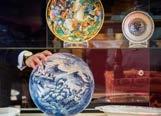


PiazzaUnità PiazzaVerdi RivadelMandracchio RivaNazarioSauro Riva Tre Novembre viaDiaz viaS.Nicolò CanalediPonterosso MoloBersaglieri viaFeliceVenezian viaCadorna 5 4 1 2 3 Iesu Antichità Arte Androna degli Orti Geremi antiquariato
Davia Antiquario PiazzadellaBorsa Piazzadi Cavana PiazzaHortis
Roberto Borghesi
70 TRIESTE LIFESTYLE IES N°3 — September 2018 Agenda

Ideale per chi cerca una casa, un appartamento, una villa o un palazzo in vendita, acquisto o affitto perché può contare su molti annunci e su un consistente portfolio di immobili a Trieste, in Friuli Venezia Giulia, ma anche all’estero. Un gruppo di professionisti che opera con esperienza e sensibilità durante tutto il percorso di intermediazione con un unico broker come referente per una consulenza personalizzata. Massima garanzia e trasparenza al venditore e al compratore. Lavora sia con clienti privati che con imprese e aziende per creare redditizie opportunità di investimenti.
Gretta. Rif. T3439
Un attico bilivello affacciato sul mare e sulla città. Ogni comfort, due box, cantina e giardino condominiale. A two-level attic overlooking the sea and the city. Every comfort, two garages, cellar and condominium garden.

costiera. Rif. T4013
Un’incantevole posizione. Un appartamento disposto su più livelli e ben rifinito con legno e pietra a vista. An enchanting position. Apartment on several levels finished with wood and exposed stone.
San Vito. Rif. T3027
In un bel residence con parco, lussuoso appartamento. Prestigioso, rifinito e arredato con mobili di design. Luxury apartment in a beautiful residence surrounded by a park. Prestigious, finished and furnished with designer furniture.
The ideal agency for those looking for a house, an apartment, a villa or a building for sale, purchase or rent as it can count on a large advertising network and has a substantial portfolio of properties in Trieste, Friuli Venezia Giulia and also abroad. A group of experienced professionals who work with sensibility along the way. It also means having a dedicated agent offering a personalized consultancy service. Gallery offers maximum guarantee and transparency to both sellers and buyers. Gallery serves to private clients and companies, creating profitable investment opportunities.

San Vito. Rif. T6003
Vicino al mare e alle Rive, un ampio appartamento dall’atmosfera sofisticata e architetture d’epoca. Near the “Rive” (city seaside bank), a spacious apartment with a sophisticated atmosphere and historical architecture.
centro. Rif. T3024
Un elegante appartamento con caminetto e terrazzo nella tranquillità di un parco nel pieno centro cittadino. An elegant apartment with fireplace and terrace in the tranquillity of a private park in the city centre.
Roiano. Rif. T493 Ottimo appartamento in villa con parco. Ampia metratura e completa assenza di barriere architettoniche. Villa inside a private park, exquisite apartment. Large square footage without architectural barriers.

NON SOLO OSPITALITà, mA SeNSAzIONe dI cASA NOT JUST hOSPITALITy bUT ALSO SeNSATIONS Of hOme





Un hotel elegante in una bella zona vicino al centro. Spazi espositivi, luogo di cultura e camere moderne. Un raffinata offerta enogastronomica e una rilassante area lounge. Trattative riservate. An elegant hotel in a beautiful area near the centre. Exhibition spaces, a place of culture and modern rooms. A refined food and wine offer with a relaxing lounge area. Private negotiation. Trieste, running hotel with restaurant and parking.

Trieste, Via San Nicolò 23/d +39.040.7600250 info@galleryimmobiliare.it galleryimmobiliare.it
€650.000 | 211mq cl.en. C €530.000 | 329mq Ape in corso €648.000 | 202mq Ape in corso €517.000 | 153mq Ape in corso €580.000 | 152mq cl.en. D €450.000 | 154mq Cl. en. C A TRIeSTe, UN hOTeL AVVIATO cON RISTORANTe e PARcheGGIO
SemPLIcemeNTe UNIcA
colle di Scorcola
Villa d’epoca ristrutturata con elegante creatività e rifiniture pregiate.

Moderne geometrie che si stagliano sul giardino a terrazza con una grande piscina affacciata sul golfo triestino.

Un connubio di raffinatezza e tecnologia vicino al centro città.
IL PRIVILeGIO deL mARe
THE PRIVILEGE OF THE SEA Coastal Road
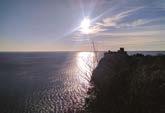
A large villa that allows different solutions for use. Three large prestigious apartments. A park that offers tranquillity and every kind of comfort. Private dock connected with elevator.
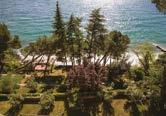
Strada costiera
Una villa di ampia metratura, con un’architettura che consente diverse soluzioni di impiego. Tre grandi appartamenti di prestigio. Un parco a pastini che offre tranquillità e ogni tipo di comfort. Molo privato con darsena collegato con comoda cremagliera.
SIMPLY UNIQUE
Scorcola Hill
Historical renovated villa with elegant creativity and fine finishes. Modern geometries that stand out onto the terrace garden with a swimming pool overlooking the Gulf of Trieste. A combination of refinement and technology near the city centre.

GeOmeTRIe dI beLLezzA
Strada costiera
Una grande villa progettata con una pianta esagonale che la rende unica. Ambienti spaziosi, luminosi e rifiniti. La particolare architettura consente diverse possibili soluzioni di impiego. Prato all’inglese, giardino a pastini e bella dependance.
GEOMETRIC BEAUTY
Coastal Road
A large villa with a hexagonal plan that makes it unique. Spacious, bright and refined environments.
The particular architecture allows different possible solutions for use. Lawn, terraced garden and beautiful annex.
TUTTe Le emOzIONI deL mARe
A Duino e Grignano, ville con parco e accesso diretto al mare. Ampi spazi progettati e realizzati con prestigio. Posizione ed esclusività per vivere ogni giorno tutte le emozioni del mare.
ALL EMOTIONS OF THE SEA
In Duino and Grignano, villas with private park and direct access to the sea. Large spaces designed and built with prestige. Position and exclusivity to experience all the emotions of the sea.
cOLLIO: UN ANfITeATRO d.O.c . TRA TeRRA e mARe
cOLLIO: A d.O.c . AmPhITheATeR beTWeeN eARTh ANd SeA
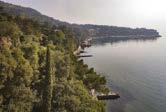
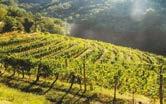
Sul magnifico Collio, unico in ogni stagione, un agriturismo con coltivazione di vitigni sauvignon e friulano e cinque alloggi accoglienti affacciati su vigne e colline, curati e con tutti i comfort.
In the magnificent region of the “Collio”, unique in every season, an agriturismo farm with cultivation of sauvignon and Friuli wines and five cozy and confortable accommodations overlooking the vineyards and hills. Cultivation of select vine varieties and suggestive residence.
Rif.T933 APE in corso
Rif.T907 Costiera
en. C
Rif.T7002 Classe
d UINO GRIGNANO
AzIeNdA AGRIcOLA cON cOLTIVAzIONe dI VITIGNI PReGIATI e SUGGeSTIVO ReSIdeNce
MUSEO OSIRIDE BROVEDANI IN CITTÀ
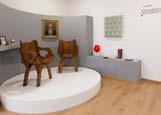
La casacca da deportato nei campi di concentramento nazisti; il diario di quei giorni terribili; i sogni di imprenditore innovativo; i segni del successo vissuto sempre pensando ai meno fortunati e un messaggio forte, rivolto soprattutto ai giovani: inseguite i vostri sogni, il successo arriverà in aggiunta. È un’esperienza unica nel suo genere –nella quale emozioni, storia ed economia s’intrecciano davanti a oggetti e installazioni multimediali– quella che aspetta il visitatore del Museo Brovedani, al numero 6 di via Alberti, a Trieste, nell’appartamento che fu di Osiride Brovedani, eclettico imprenditore e benefattore triestino, in arte “signor Fissan”.
L’atmosfera di quell’epopea si respira ancora oggi in questo singolare museo. È nel salotto di questa casa che Brovedani riceveva gli appuntamenti di lavoro, con il tavolo della sala da pranzo che si trasformava in scrivania. Ed è nello scantinato di questa casa che, nel 1930, nacque il successo della Pasta di Fissan. Osiride aveva 37 anni e provvedeva al sostentamento della famiglia già da quando ne aveva 14. A quella pasta, che materializzava i suoi sogni d’imprenditore, fu dato un nome che riecheggiava la lingua latina: “fissarum sanare” ovvero “guarire le screpolature”.
Nel percorso del Museo ci sono le tappe della sua vita, dei suoi sogni, dei suoi valori: cinque diversi ambienti, che raccontano la sua infanzia, la sua attività di giornalista, lo scantinato “culla” della Pasta Fissan, fino ai ricordi della deportazione in Germania
e alle attività del Dopoguerra, con l’azienda, dove si dice che i veri padroni fossero i gatti, sua grande passione assieme all’alpinismo. Una ricostruzione nella quale storia e geografia europea del XX secolo s’intrecciano all’economia letta attraverso le innovazioni tecniche dell’industria Fissan e i valori professionali e umani di Osiride Brovedani. Per esempio, lui, oculato di carattere ma grande di cuore, aiutò con elargizioni anonime chi era in difficoltà e, in barba agli stigmi sociali dell’epoca, assunse una ragazza madre così come il figlio di una suora.
Dopo la sua morte, nel 1970, la Fondazione Brovedani continua a sostenere iniziative nei settori dell’infanzia, della scuola, della terza età e della sanità, sotto la direzione di Raffaele De Riù. A Gradisca d’Isonzo tiene in vita una casa albergo per anziani, accolti a titolo gratuito. www.fondazionebrovedani.it. [LG]
The prisoner uniform he wore as a deportee in a concentration camp; a diary account of those atrocious days; the dreams of a creative entrepreneur; the legacy of a life of success constantly shared with the less fortunate; and a clear message addressing today’s young minds more than anyone else: follow your dreams,
ENGLISH TEXT
—
Emozioni, sogni, storia e solidarietà
74 TRIESTE LIFESTYLE IES N°3 — September 2018 Agenda
Emotions, dreams, history, and solidarity
and success will come as collateral benefit. It is a unique experience, one where emotions, history, and economy merge into objects and multi-media installations – this is what visitors find in Museo Brovedani, at n.6 of Via Alberti, Trieste, inside the flat of late Osiride Brovedani, eclectic businessman and local benefactor, also known as “Mister Fissan”.
Within the walls of this unique museum lingers the atmosphere of Brovedani’s life. He used to hold his business meetings in this very living room, turning his dining table into a work desk. His basement was the laboratory where he invented his famous Fissan baby paste in 1930. Osiride was 37 then, but he had been providing for his family since he was 14. His paste was the realization of his entrepreneurial dream, and the name he chose for it echoes an ancient Latin expression: “ fissarum sanare ”, namely “curing cracked skin”.
The Museum itinerary tells the story of Osiride’s work, dreams, and values in five rooms, corresponding to five different stages of his life: his childhood, his work as a journalist, the basement where he invented his Fissan paste, his deportation to Germany, and his life after the war, when he built his own business and spent his free time mountaineering and taking care of his cats – who were said to be the real rulers of his company. Europe’s twentieth century history and geographical changes run parallel to the story of innovation of the Fissan brand, as well as the professional and human values of his owner.

Osiride’s highly cautious business spirit, for instance, was second only to his great heart: he used to make anonymous donations to help people in need, and social stigma never prevailed over his generosity, that led him to hire in his company a single mother and the illegitimate son of a nun.
When he died, in 1970, his foundation “Fondazione Brovedani” took over his philanthropic activities, and to this day it continues to support numerous initiatives helping children, students, the elderly and the sick, under the guidance of current director Raffaele De Riù. The Foundation also owns a rest home in Gradisca d’Isonzo, where elderly guests can reside for free. www.fondazionebrovedani.it. [LG]
75 TRIESTE LIFESTYLE IES N°3 — September 2018 Agenda
IN RELAX EXENTIA
Una Spa intorno a te, tra Carso e mare
Relax, riservatezza e tranquillità, in un angolo personale di cura e benessere della mente e del corpo: è Exentia, la moderna SPA dell’Hotel Riviera, sopra la baia di Grignano, tanto cara a Massimiliano d’Asburgo, in uno dei punti più suggestivi della Costiera triestina. Una terrazza sul mare, unica per qualità e servizi, a cominciare dalla sauna vista mare fino al relax nella penombra della stanza del sale. Se ne può godere poche persone alla volta, o in piccoli gruppi esclusivi (previa prenotazione) e finanche solo in due (nello spazio esclusivo della Spa Elysium) in una privacy che fa vivere le suggestioni delle magiche atmosfere del Carso e le bellezze del Mar Adriatico. Tecnologie, attrezzature e percorsi di cura olistica della persona, compresi i massaggi della Spa sul mare Exentia Beach (aperta da maggio a settembre) impreziosiscono l’esperienza, insieme a una vasta gamma di prodotti dermocosmetici made in Italy e a uno staff professionale selezionato e formato per il benessere degli ospiti. Massaggi, trattamenti e servizi di estetica 7 giorni su 7; Exentia ogni giorno dalle 10 alle 20, lunedì e giovedì dalle 14 alle 20. [LA]

tel. +39 040 224136 www.exentiaspa.eu
A spa all around, between the Karst Plateau and the sea

Relax, privacy, and tranquillity, to be enjoyed in an intimate cocoon of wellness of the mind and the body: Exentia, the modern spa of Hotel Riviera, facing the bay of Grignano, most beloved by Maximilian I of the House of Habsburg, is located in one of the most beautiful corners of the Gulf of Trieste. A terrace by the sea, unique in quality and service, from its saunas with sea view to its relaxation spaces under the dim lights of the salt room. Only a few individuals at a time, or small groups (reservation required) may enjoy this area, in the magic atmosphere of the landscape framed by the Karst Plateau and the Adriatic Sea – couple reservations available for the spa private room “Elysium”. Technologies, specialised equipment, and tailored care itineraries for personal holistic treatment, including Exentia Beach –spa massages performed by the sea (from May to September)– contribute to this luxurious experience, which can be further enriched with Italian-made skincare products and the wellness tips of a selected team of in-house professionals. Massages, treatments, and aesthetical services 7 days a week. Exentia opening times: every day from 10.00 a.m. to 8.00 p.m., Mondays and Thursdays from 2.00 p.m. to 8.00 p.m. [LA]
tel. +39 040 224136
www.exentiaspa.eu
76 TRIESTE LIFESTYLE IES N°3 — September 2018 Agenda
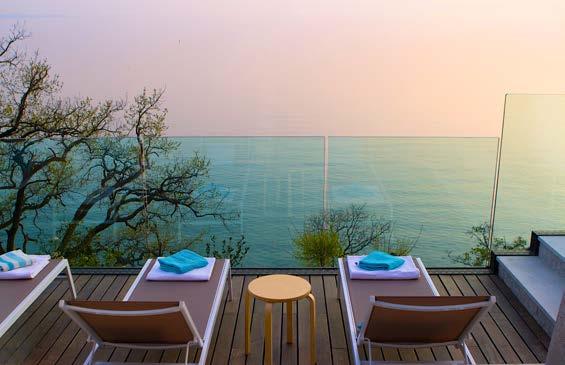
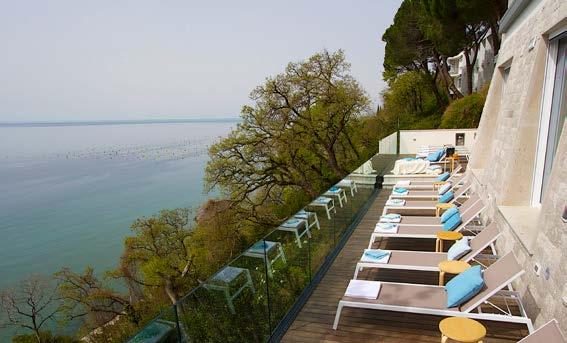
77 TRIESTE LIFESTYLE IES N°3 — September 2018 Agenda
EVENTI
Appuntamenti da non perdere
Events not to be missed
6–7
Castelli aperti –Castles’ open days
Se siete in Friuli Venezia Giulia la prima settimana di ottobre, questo è un appuntamento che merita una visita. Questa è una regione di castelli e ville padronali: alcuni a Trieste, come i famosissimi castelli di San Giusto, Miramare e Duino, altri –tantissimi– nel vicino Friuli. Ebbene nel week end del 6 e 7 di ottobre saranno aperti al pubblico, anche con visite guidate. La stagione è quella giusta e alcune di queste antiche dimore sorgono in contesti ambientali di grande suggestione. L’orario d’inizio delle visite è dalle 10 al tramonto.
If you are visiting the Friuli Venezia Giulia region during the first week of October, this event deserves your attention. Indeed, every corner of this region has its own castle and/ or manor: some are in Trieste, like the castles of San Giusto, Miramare, and Duino; (many) others are scattered through the Friuli territory. All of them will be open to the public on the first weekend of October, from Saturday 6th to Sunday 7th, some offering guided tours. The event takes place in the best possible season, as most of these residences are located in places where natural landscapes become spectacular in Autumn. Tours start at 10 a.m. and continue throughout the day until sunset.
7, 18
Trieste di corsa
–
Trieste, the jogging city
Non è un caso se Trieste è stata indicata come la provincia più sportiva d’Italia. Il calendario delle manifestazioni sportive previste in città è tra i più ricchi della penisola.
A Trieste in particolare piace molto andare di corsa e anche in autunno, con temperature più accettabili rispetto all’estate, ecco due eventi che faranno la gioia di chi anche in vacanza si porta dietro le scarpette da runner. Domenica 7 ottobre si corre nella vicina Muggia l’Eco Trail della penisola, mentre domenica 18 novembre è in programma la Corsa dei Castelli, da Miramare a San Giusto. Per entrambe, partenza alle 10.
Unsurprisingly, Trieste was recently named the sportiest city in Italy. Its calendar of sports events is among the richest in the whole country. In particular, people in Trieste like to jog, even in autumn months, when the summer heat relents. Here are two events that will catch the eye of those who never forget to pack their running shoes. On Sunday 7th October the Eco-Trail takes place in Muggia, while on Sunday 18th November the Corsa dei Castelli [lit. Castles’ Run] will take runners from Miramare to San Giusto. Both competitions start at 10 a.m.
–
—
–
OTTOBRE / NOVEMBRE OCTOBER / NOVEMBER 78 TRIESTE LIFESTYLE IES N°3 — September 2018 Agenda
24
Cose di vecchie case: mercatino
Old things from old houses: flea market
Una Portobello in miniatura, oppure una via di mezzo tra la romana Porta Portese e il mercatino delle pulci parigino. Anche una breve visita nella centralissima piazza Vittorio Veneto (davanti all’imponente Palazzo delle Poste) questo piccolo mercatino dal nome intrigante “cose di vecchie case” comunque la merita. Con un occhio attento e un po’ di fortuna se non proprio l’affare, almeno un piccolo oggetto carino con pochi euro potete portarlo via… L’iniziativa è in programma il 27 di ottobre ed il 24 di novembre.
A miniature Portobello Road, or a cross between Porta Portese in Rome and Paris flea market. This little flea market with an intriguing name, “Old things from old houses” deserves at least a brief visit to Piazza Vittorio Veneto square (in front of the Post’s main building Palazzo delle Poste). With a good eye –and a little luck–you will either strike a real deal or at least bring home a neat souvenir… This event will take place between 27th October and 24th November.
30–4
Trieste Science+Fiction Festival
È il più importante evento italiano dedicato ai mondi della fantascienza e del fantastico. Se siete quindi degli appassionati del genere non potete perdervi questo festival cinematografico:
è in programma in quello che è il più grande teatro cittadino, il Politeama Rossetti, nel centralissimo viale XX settembre, dal 30 ottobre al 4 di novembre. Oltre al cinema, a comporre quelle che vengono definite come “le meraviglie del possibile” per cinque intense giornate saranno la televisione, i new media, la letteratura, i fumetti, la arti visive e varie performance.
It is the most important event in Italy dedicated to Science Fiction and the Fantasy world and a “must” film festival for aficionados and sympathisers. From 30th October to 4th November the festival will be hosted in Trieste’s main theatre, the Politeama Rossetti, Viale XX Settembre. The “meraviglie del possibile” [Wonders of the possible] will be screened over this five-day event dedicated to cinema, television, new media, literature, comics, visual arts, and various other performing arts.
Festival del Cinema
Latino Americano
Latin American Film Festival
L’amore di Trieste per il mondo del cinema è testimoniato dal grande numero di festival e rassegne ospitato da sempre in città. Una di queste è dedicata alla cinematografia latinoamericana con un festival secondo solo a quello spagnolo di Huelva. In programma retrospettive dedicate al registra brasiliano Rosemberg Cariry, al cileno Marco Bechis e al cineasta argentino Fernando Birri, presidente del Festival, scomparso di recente. Le proiezioni del Festival come ormai consuetuidine saranno ospitate dal Teatro Miela, sulle rive di Trieste.
Love for cinema in Trieste finds evidence in the significant number of festivals and shows that are hosted here every year. One of the main events of this kind is Trieste’s Latin American Film Festival, second only to Huelva IberoAmerican Film Festival. The 2018 programme features a series of retrospectives dedicated to Brazilian director Rosemberg Cariry, ChileanItalian film screenwriter and director Marco Bechis, and Argentine film maker and theorist Fernando Birri, former president of the Festival, who passed away last year. Film screenings will take place, as always, in Teatro Miela, by the sea.
Free City Tour
Riservato a turisti slow, a chi non ha programmato che una giornata o poco più per visitare Trieste ma non vuole andar via senza aver prima dato almeno un’occhiata ai luoghi simbolo della città. Ecco quindi che per iniziativa del Comune è iniziata la sperimentazione di “Free City Tour”, un giro turistico gratuito con due partenze settimanali dallla storica piazza Unità (il sabato alle 16.30, la domenica alle 10.15). L’iniziativa, fortemente voluta dall’assessore al turismo Maurizio Bucci, si protrarrà sino alla metà di ottobre. Mete del tour, rigorosamente a piedi, con guida in italiano e inglese, la città vecchia con l’arco di Riccardo e le chiese di San Silvestro e Santa Maria Maggiore, il teatro Romano, il ghetto ebraico e poi il centro cittadino con piazza della Borsa, il Borgo Teresiano, la chiesa greco ortodossa, piazza Verdi, il molo Audace e la conclusione in piazza Unità. –
Fans of slow tourism, who have little more than a day to visit Trieste, but still want to discover the city’s most iconic places before leaving, should join the “Free City Tour” a free experiment of Trieste’s municipality taking place twice per week and starting from the historic Piazza Unità d’Italia (at 4.30 p.m. on Saturdays and at 10.15 a.m. on Sundays). The tour project, strongly supported by city councillor for tourism Maurizio Bucci, will continue till mid-October. Italian- and English-speaking guides will take visitors on an on-foot tour of the old town, including Arco di Riccardo (lit. Richard’s Arch), the churches of San Silvestro and Santa Maria Maggiore, the ancient Roman theatre, the Jewish ghetto, all the way to the city centre, with Piazza della Borsa, Borgo Teresiano, the GreekOrthodox church, Piazza Verdi square, and the last stop back in Piazza Unità.
10–18
–
–
27,
–
–
–
79 TRIESTE LIFESTYLE IES N°3 — September 2018 Agenda
POST-IT HOP TOUR
Alla scoperta della città in bus
Discovering Trieste by bus
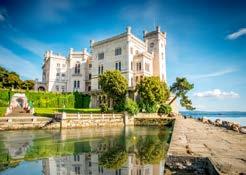
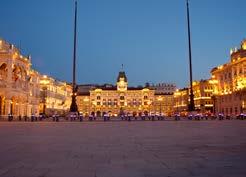
Scoprire Trieste in un itinerario di atmosfere, paesaggi e suggestivi incontri. HopTour, nuovo servizio di trasporto turistico, nasce per far conoscere la città “dall’interno”, attraverso i suoi luoghi simbolo. Si parte dalle Rive, dove il mare costeggia il centro storico per oltre due chilometri e bagna il Molo Audace, che deve il suo nome all’omonimo cacciatorpediniere che vi attraccò nel 1918, prima nave della Marina Italiana a entrare nel Golfo triestino dopo la Grande Guerra. La tappa successiva è a pochi passi: la meravigliosa Piazza Unità, la più grande in Europa affacciata sul mare. Poi una sosta in cima al Colle di San Giusto, che custodisce il ricordo della Trieste romana. L’itinerario si conclude con la visita al Castello di Miramare, antica dimora asburgica circondata da un rigoglioso parco e dalla riserva marina. A bordo dei bus, turisti e curiosi hanno a disposizione numerosi comfort, oltre ad aria condizionata, wifi e audioguide multilingue. Sono inoltre previsti tour alla scoperta della vicina Slovenia, della zona del goriziano, di Aquileia, antica colonia romana, e della località balneare di Grado. Altre località turistiche sono in corso di programmazione. Maggiori informazioni sul servizio offerto da YesTour e Trieste Trasporti sono a disposizione sul sito www.hoptour.it
An itinerary to discover the city through its peculiar atmosphere, its landscapes, and its people. HopTour is the new transport system dedicated to tourists who wish to visit the city’s most inner streets and main landmarks. The tour starts from the Rive area, where the sea meets the old town, along a twokilometre dock, all the way to Molo Audace, the dock named after a destroyer-type warship that was the first watercraft of the Italian Navy to berth in the Gulf of Trieste in 1918, right after the end of World War I. Almost in front of Molo Audace the stunning main square, Piazza Unità, opens before the Gulf – Europe’s widest square overlooking the sea. After a visit to Colle di San Giusto [Saint Justus’ Hill] and the vestiges of the Roman Empire, the tour reaches its last stop at Miramare Castle, ancient Habsburg residence surrounded by a luxuriant park and marine reserve. HopTour busses offer every kind of comfort, ranging from air conditioning, free wifi, audio-guide recordings in multiple languages, and much more. Further itineraries include visits to neighbouring Slovenia, the province of Gorizia, ancient Roman city of Aquileia, and seaside resort Grado. More tourist resorts are soon going to be included in the programme. Additional infos on the service offered by YesTour and Trieste Trasporti may be found at www.hoptour.it.
—
80 TRIESTE LIFESTYLE IES N°3 — September 2018 Agenda
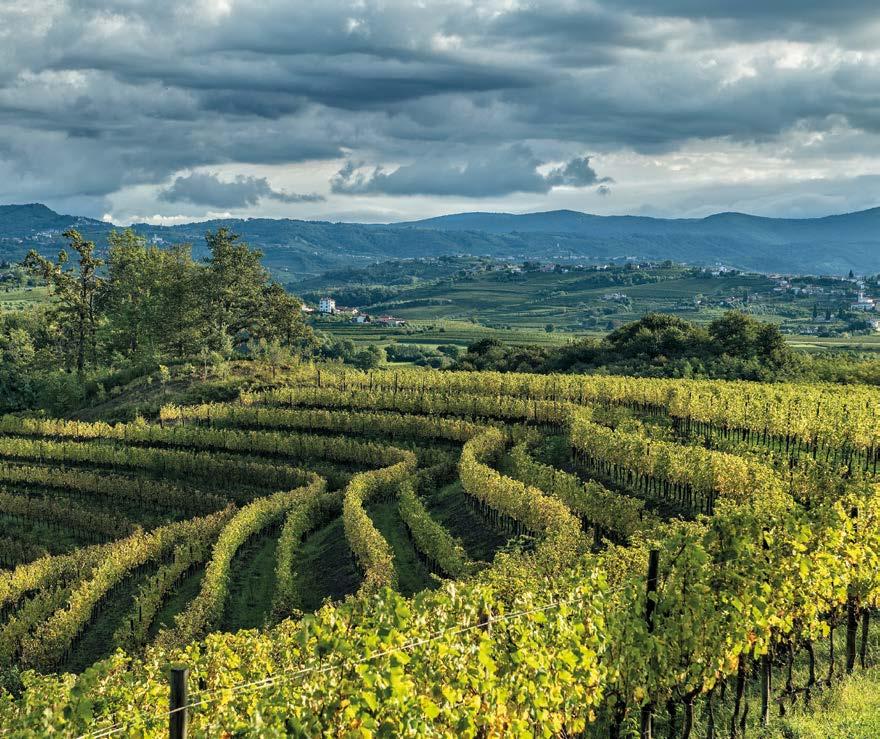





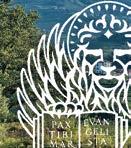






















Il Leone e l'Aquila del Collio www.marcofelluga.it MARCO FELLUGA - RUSSIZ SUPERIORE Relais Russiz Superiore
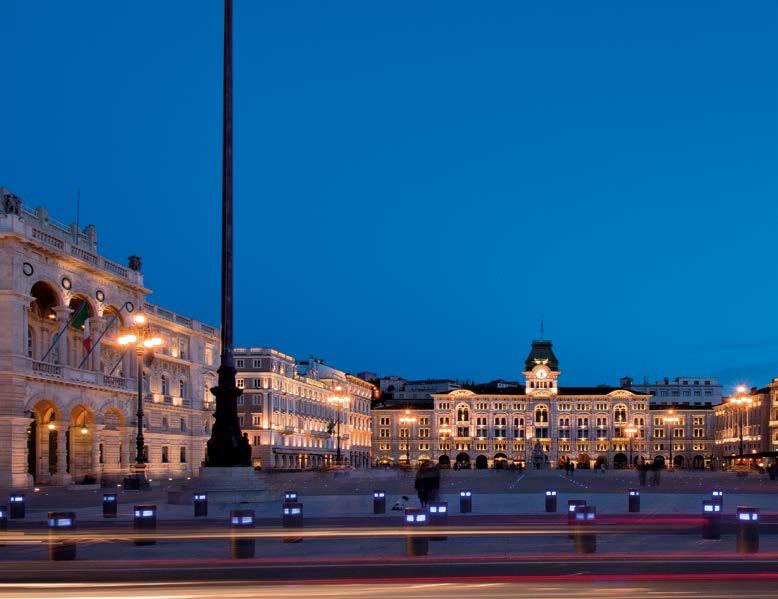
















 Caffè Stella Polare
Caffè Pirona
Antico Caffè San Marco
CaffèTommaseo
Antico Caffè Torinese
Caffè degli Specchi
Caffè Stella Polare
Caffè Pirona
Antico Caffè San Marco
CaffèTommaseo
Antico Caffè Torinese
Caffè degli Specchi







































 Federico Prandi
Federico Prandi















 Foto di / Photo by Luigi Vitale
Foto di / Photo by Luigi Vitale












 Trieste
Trieste























































